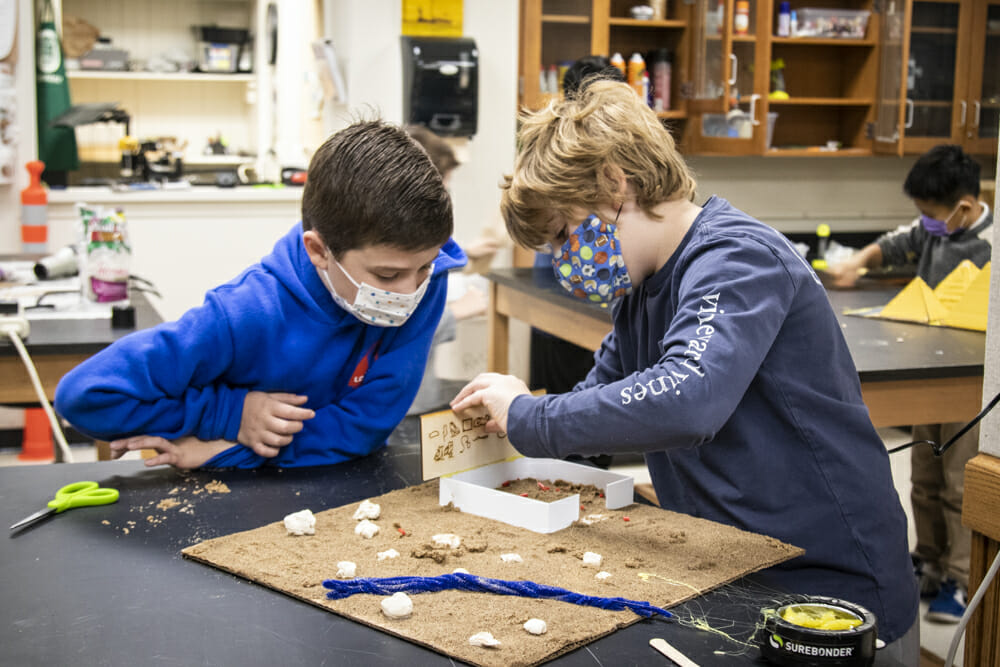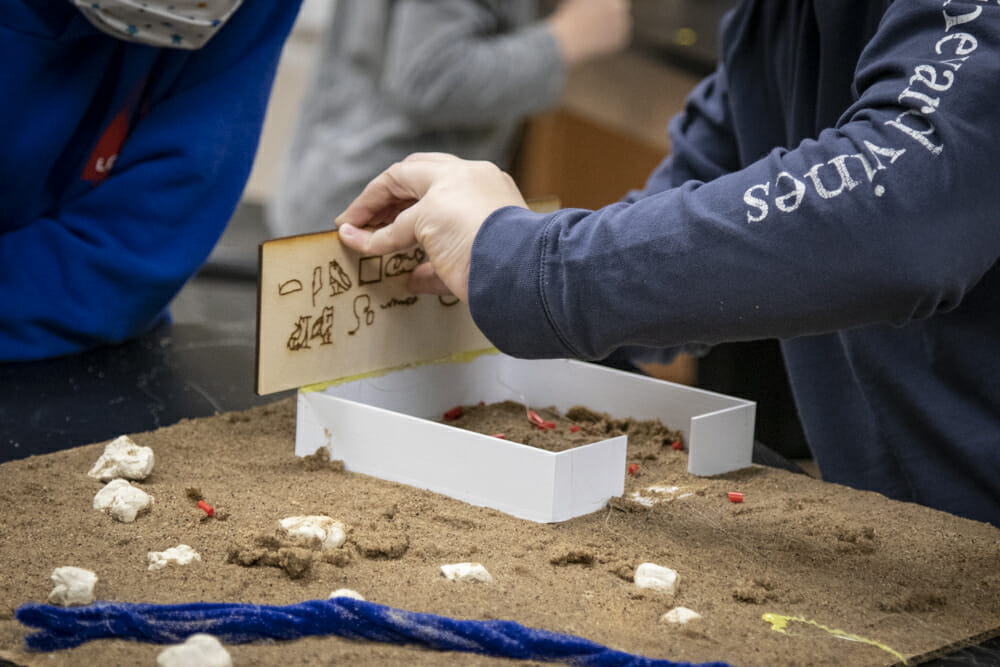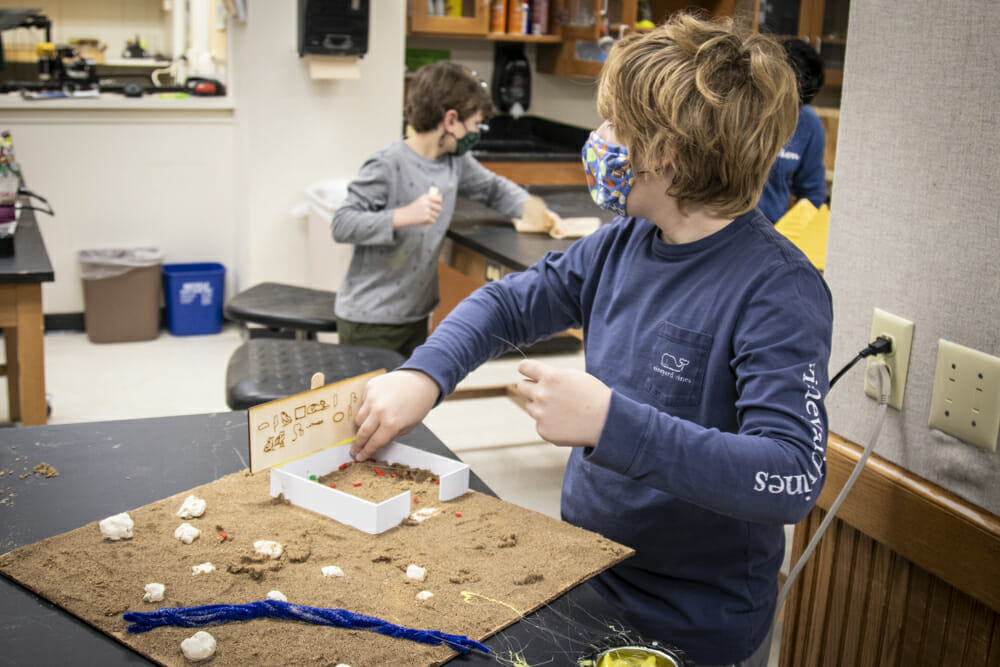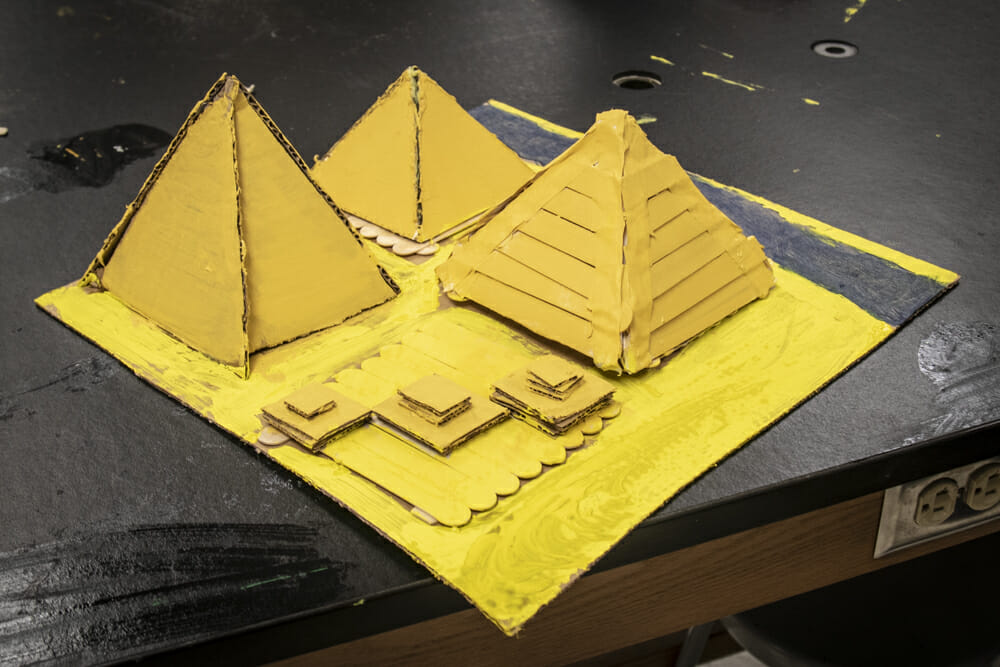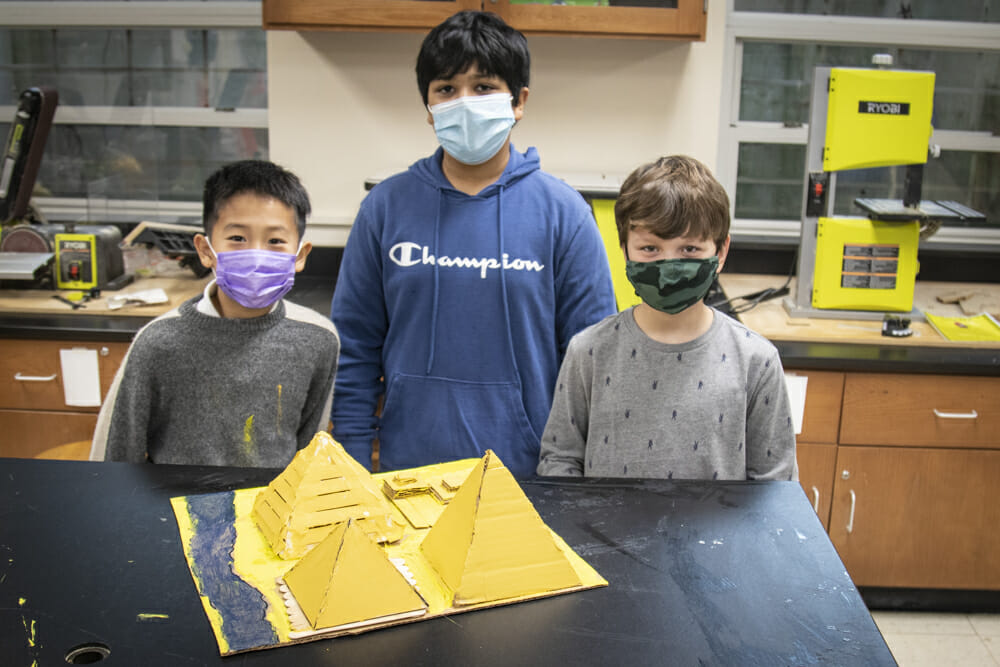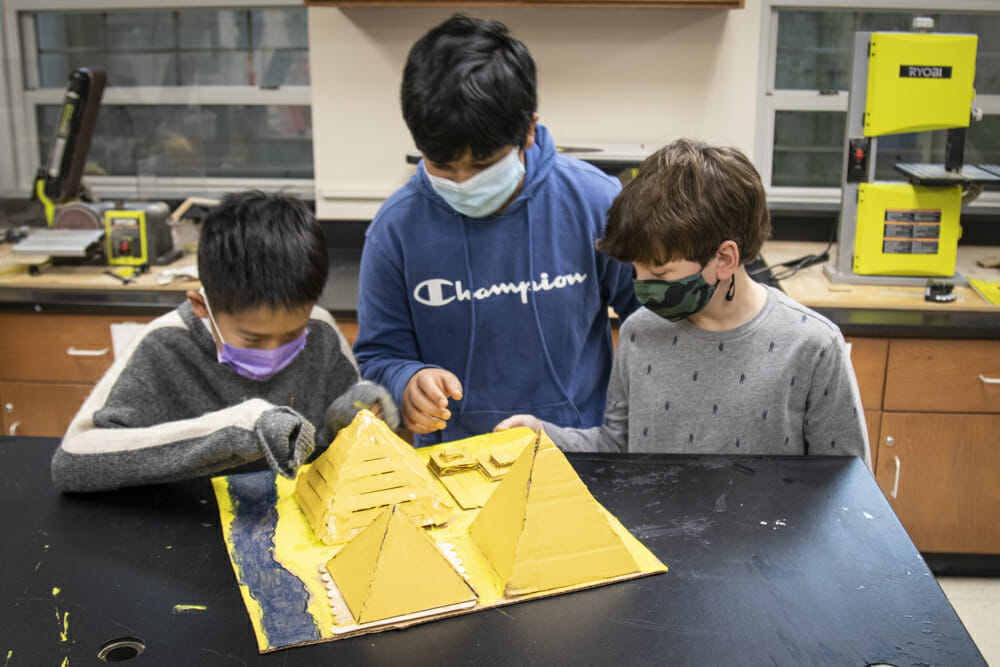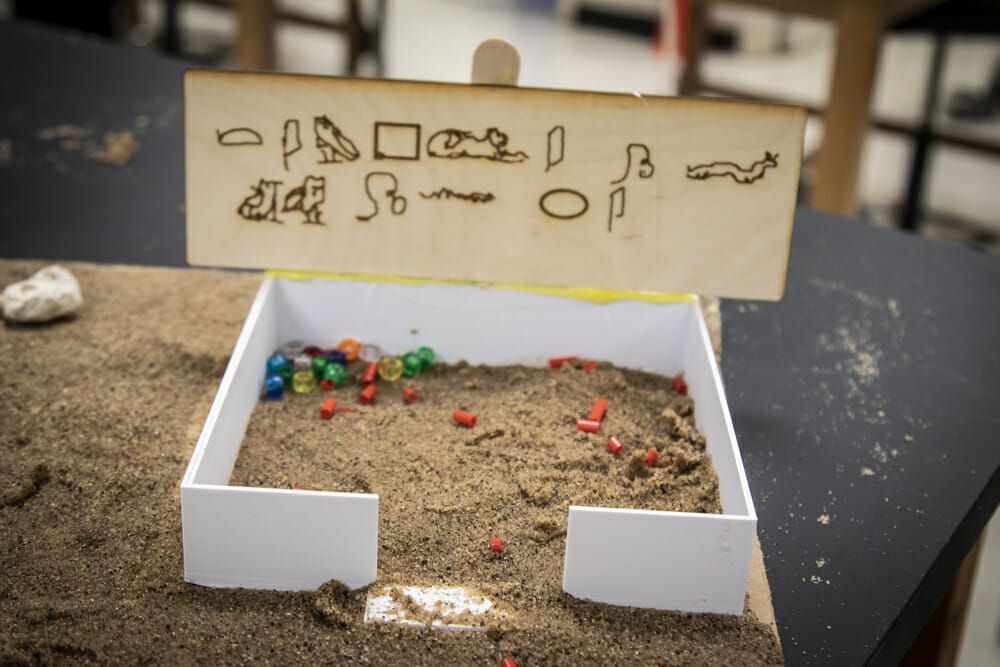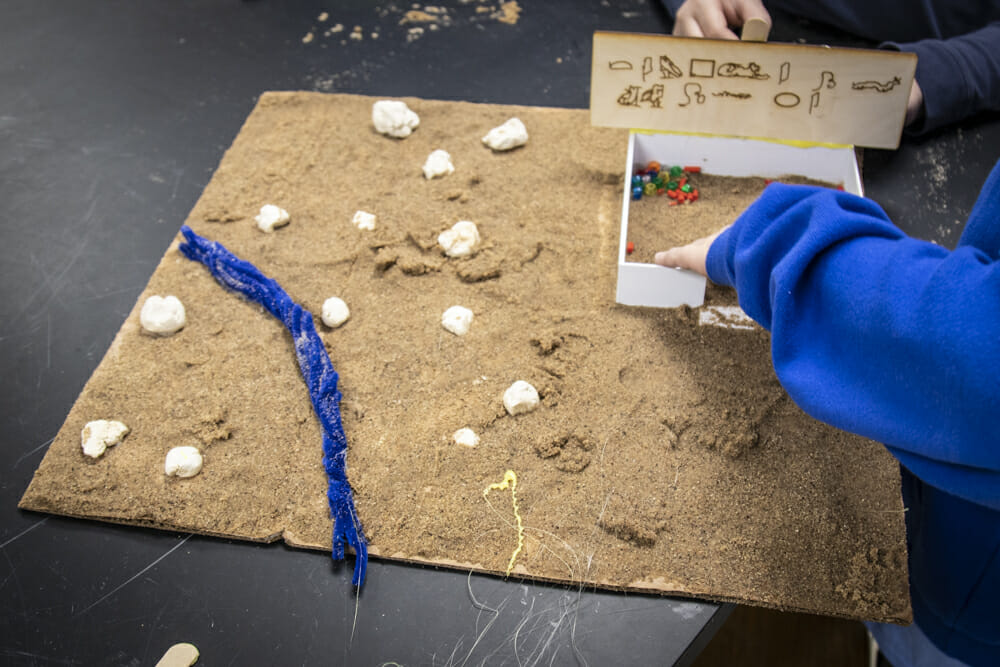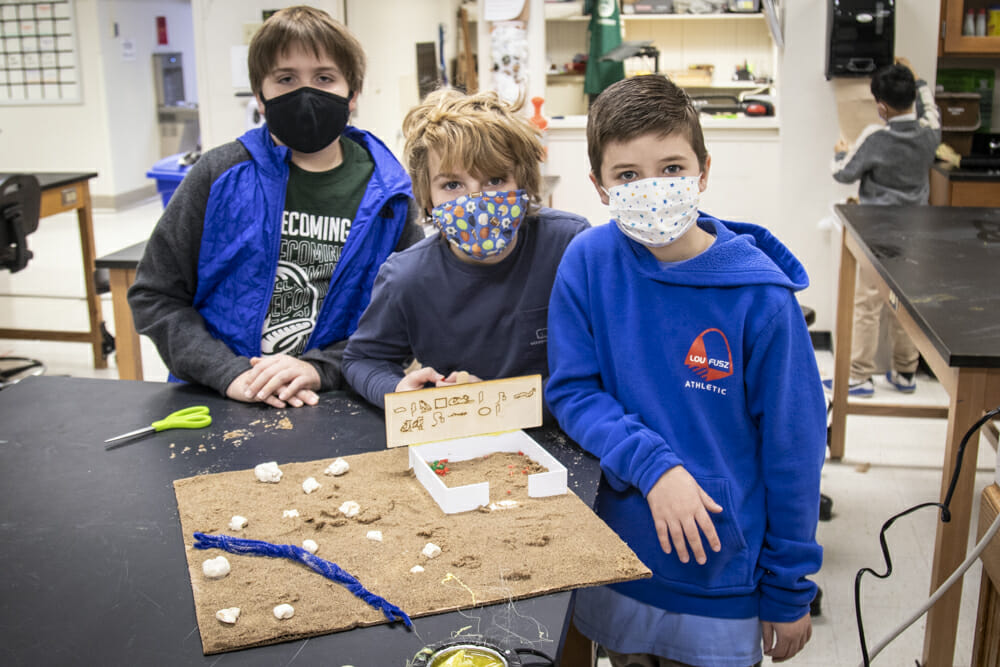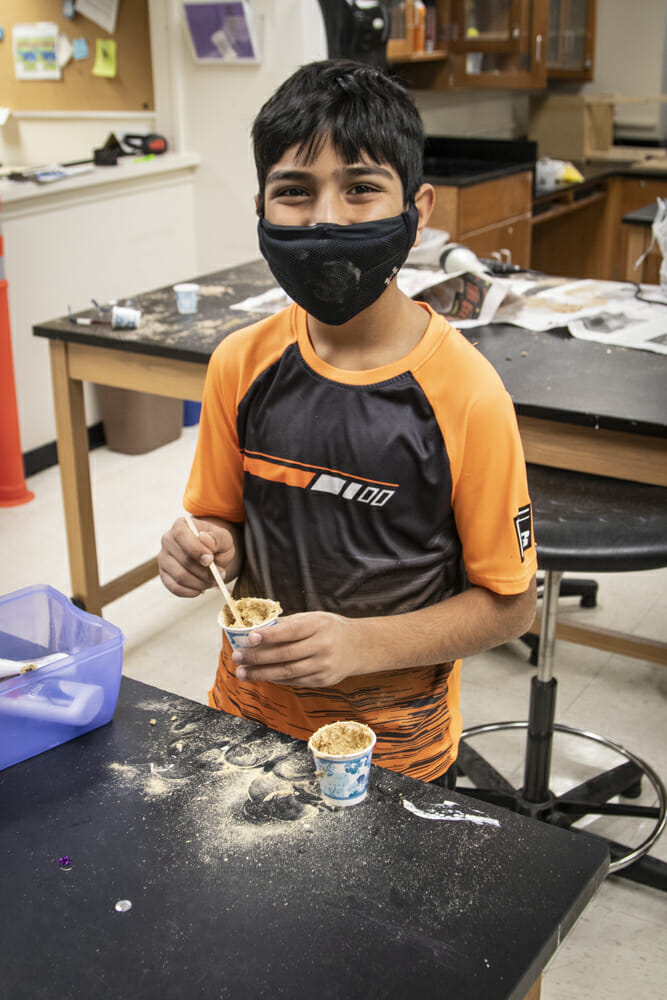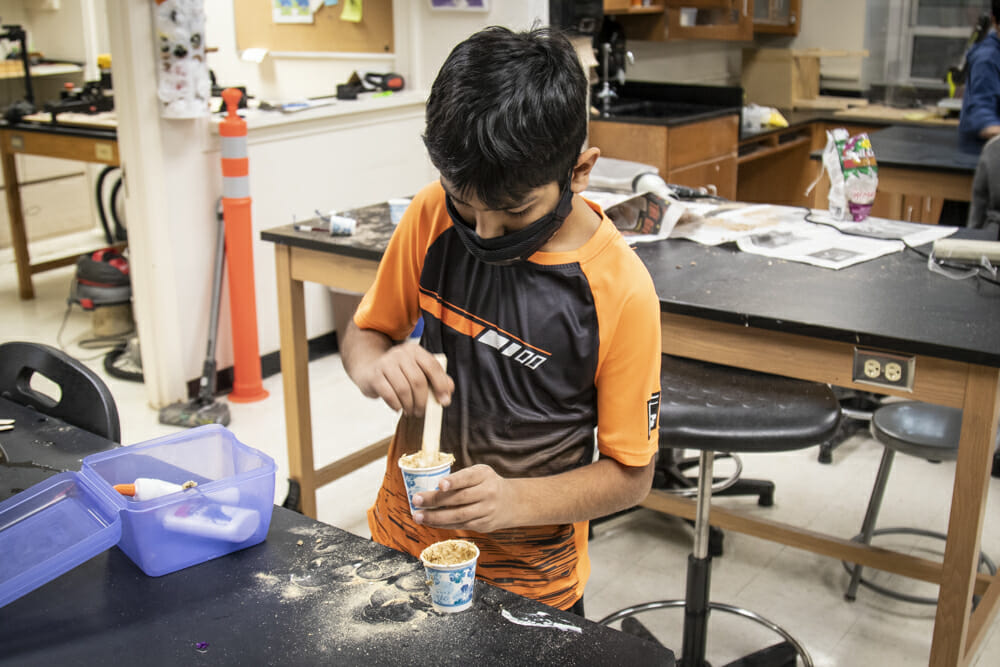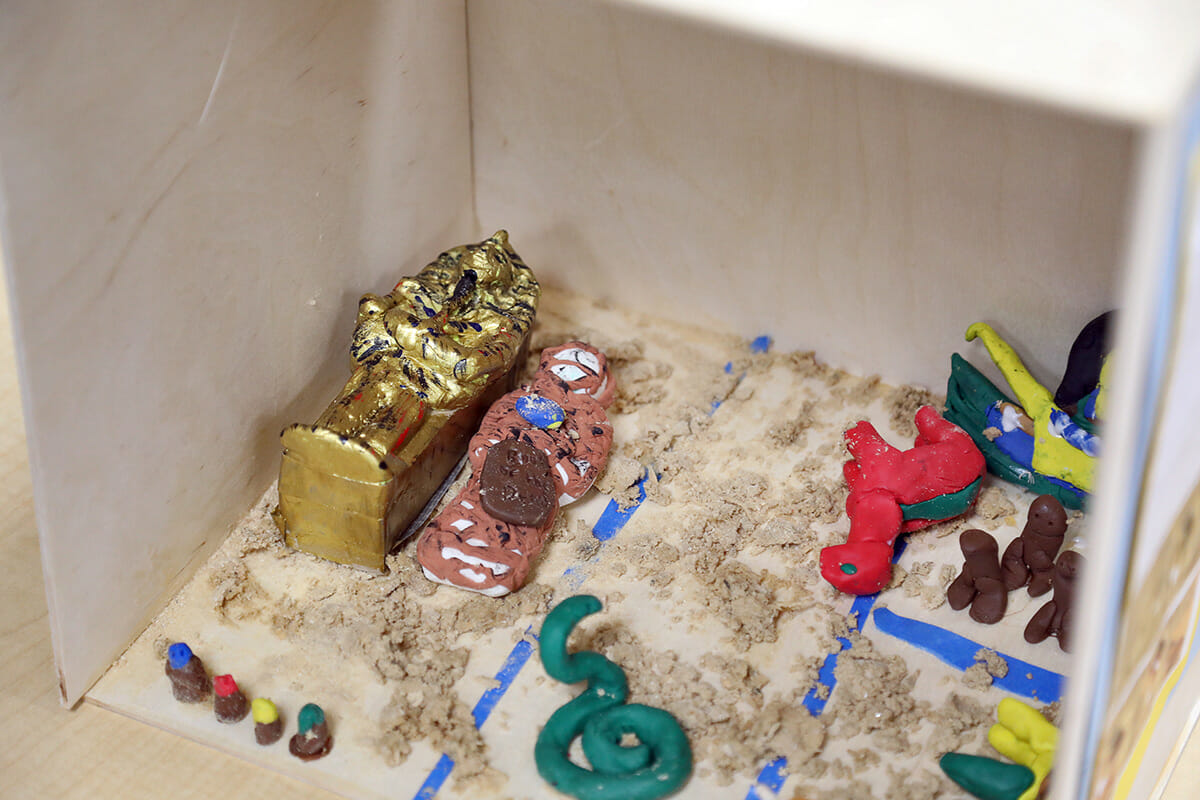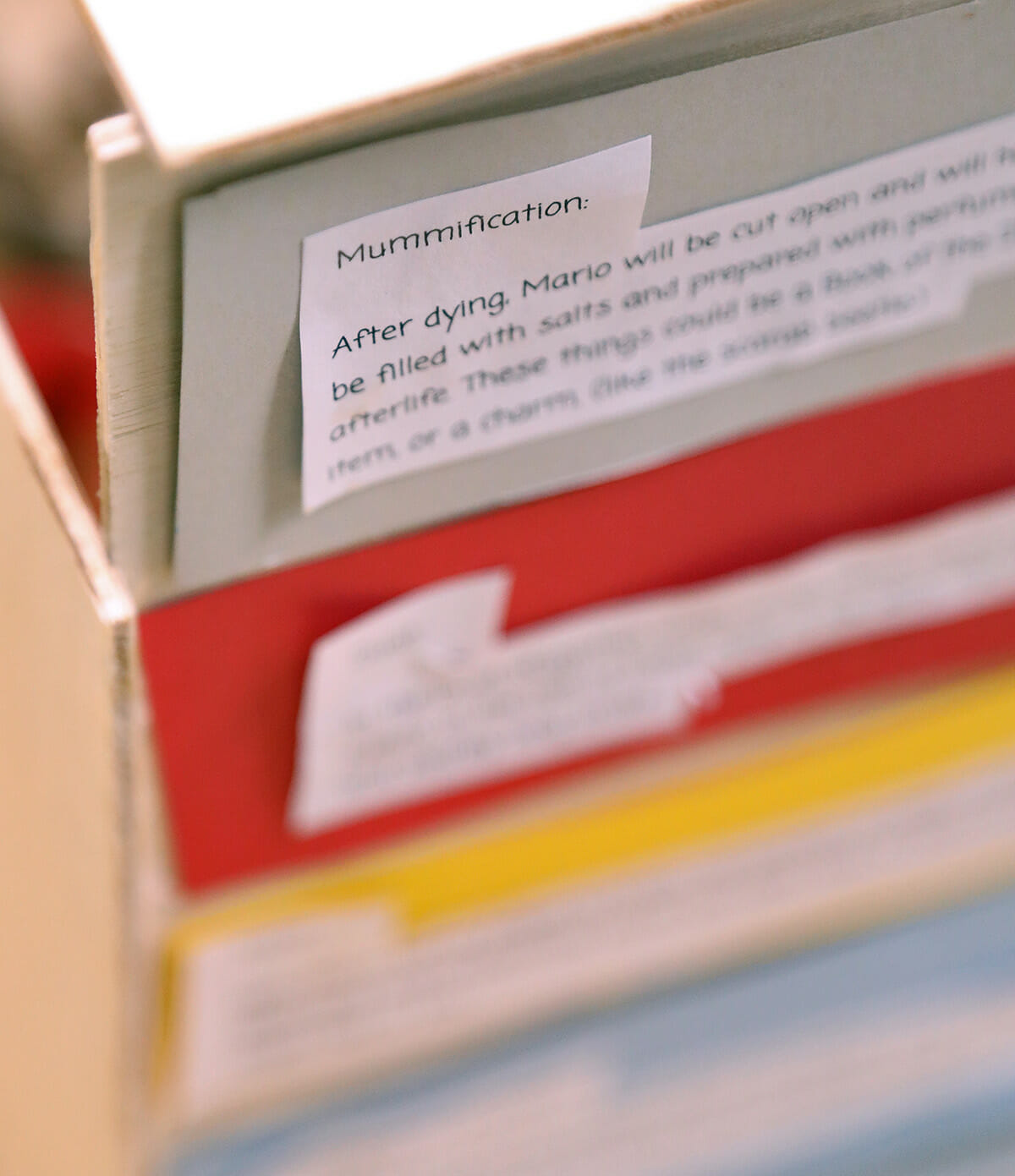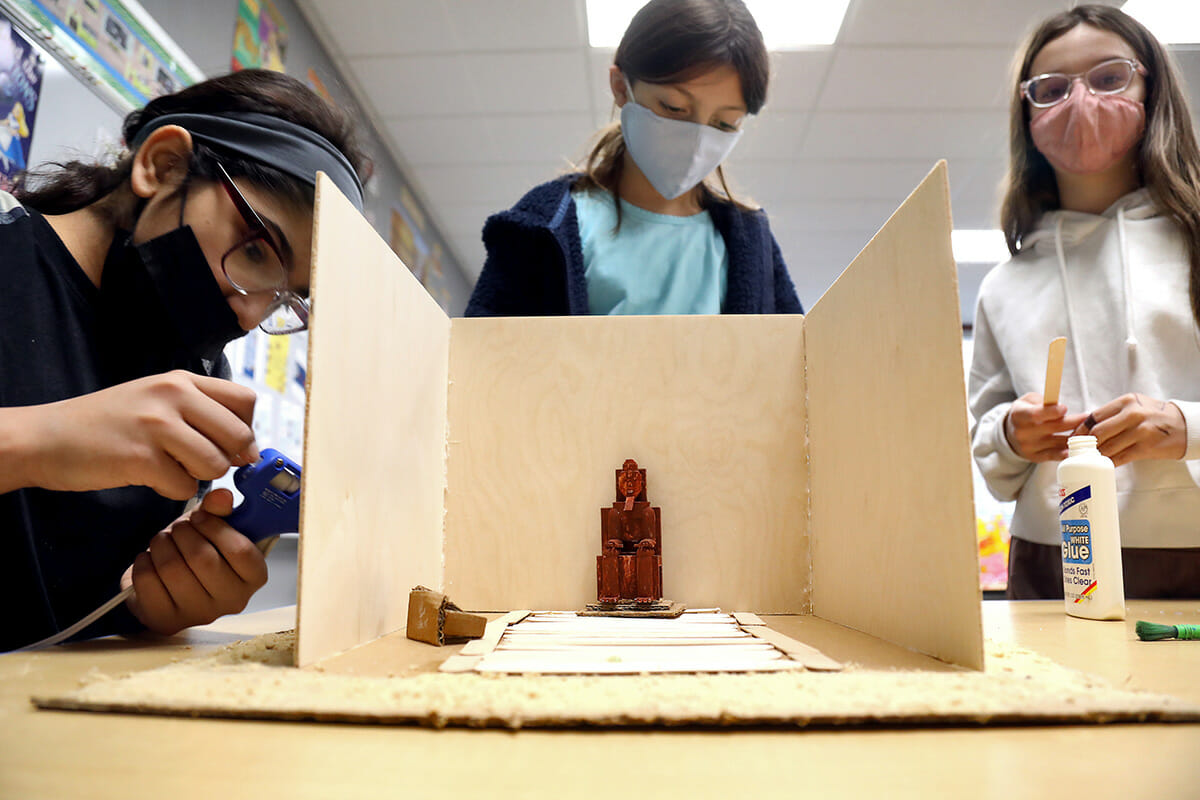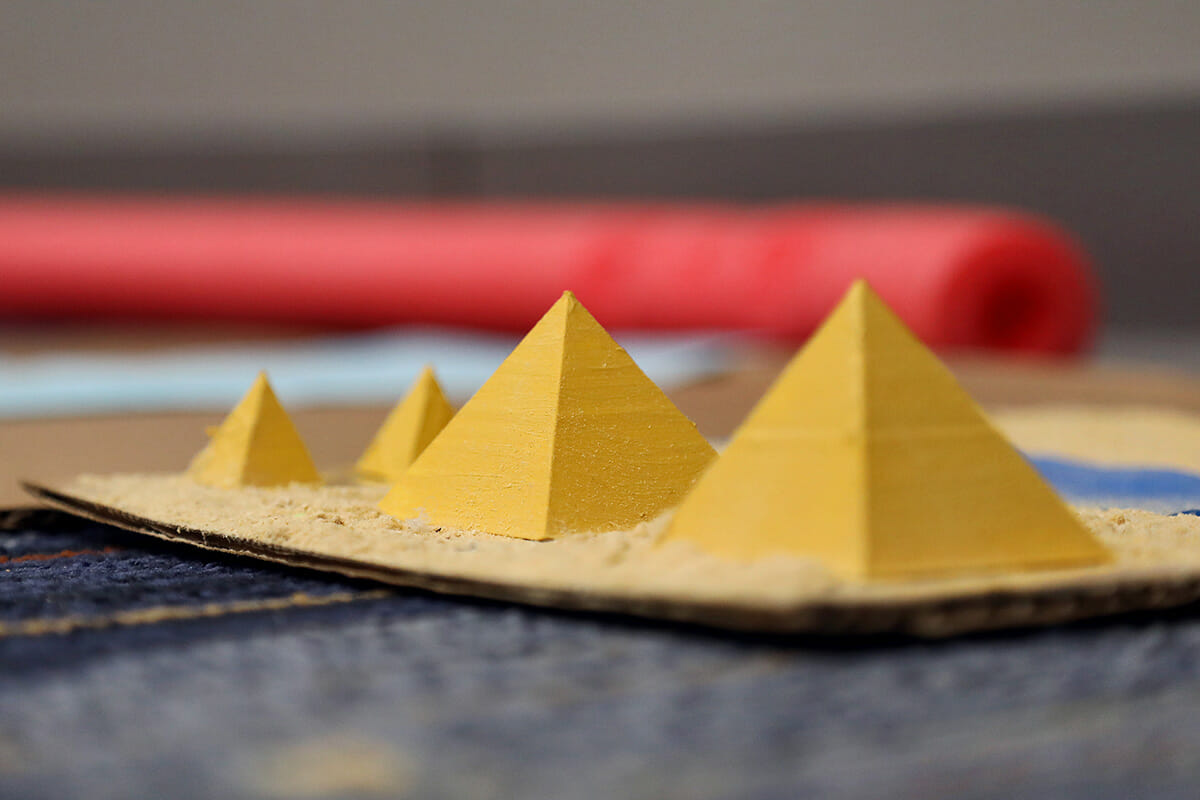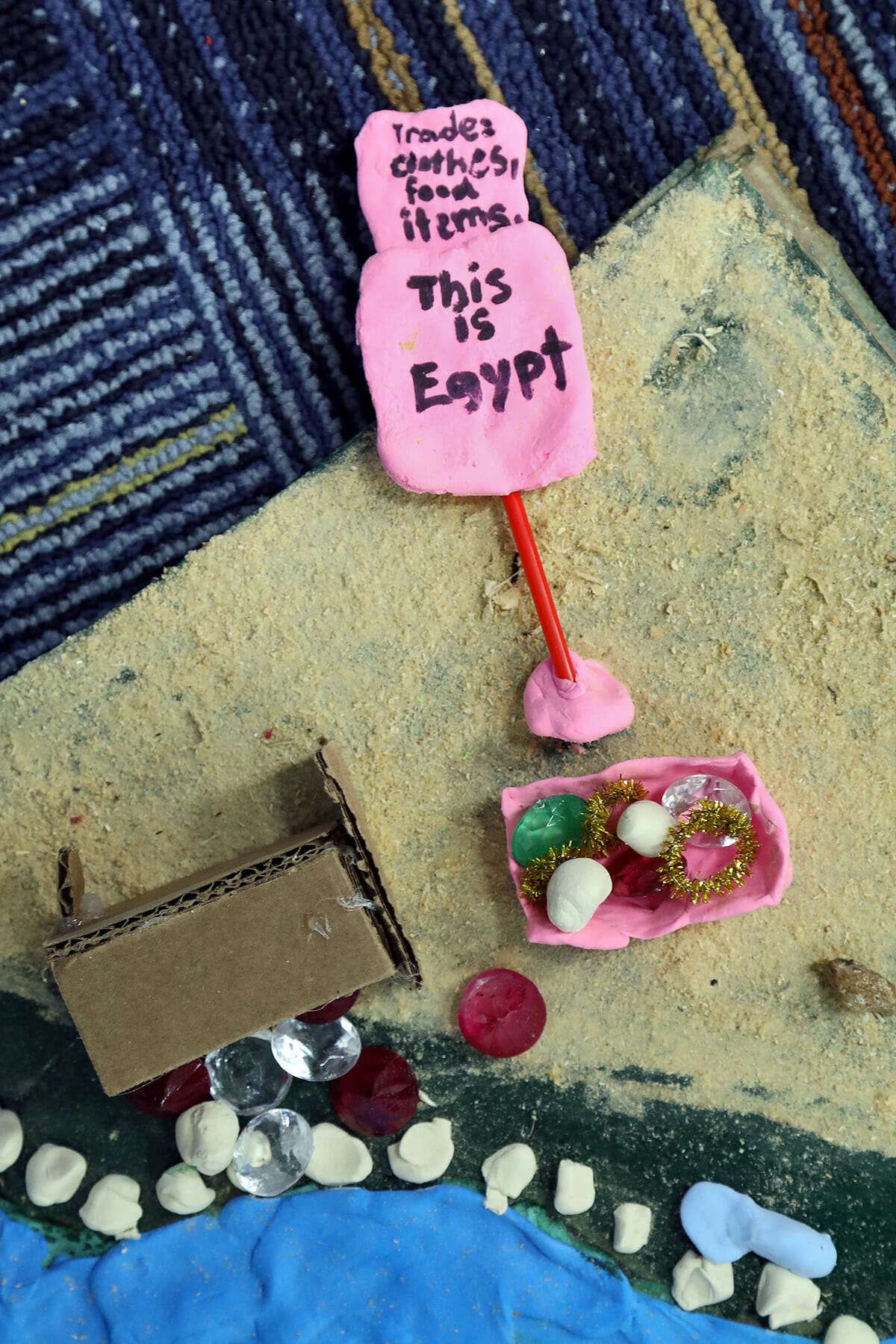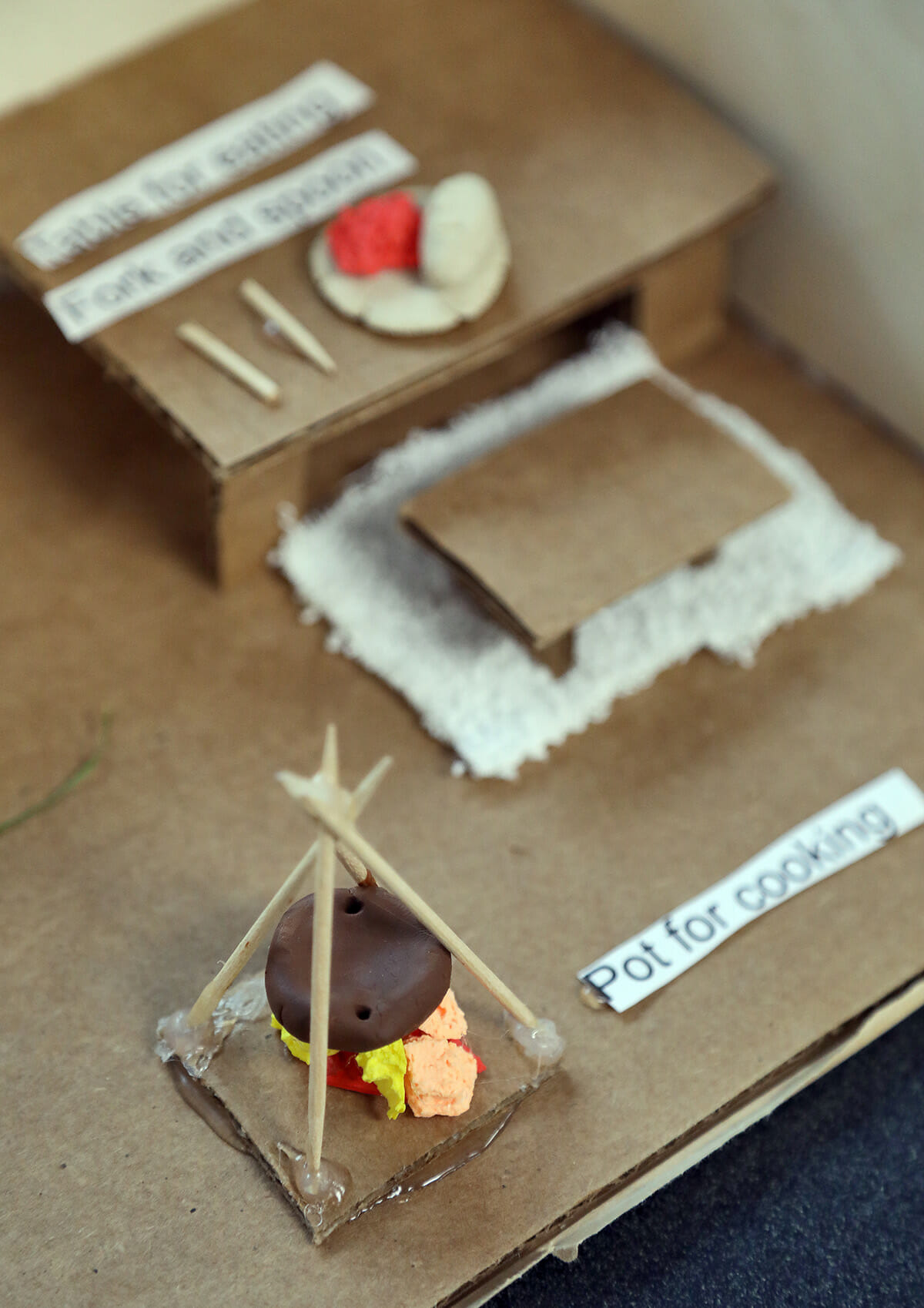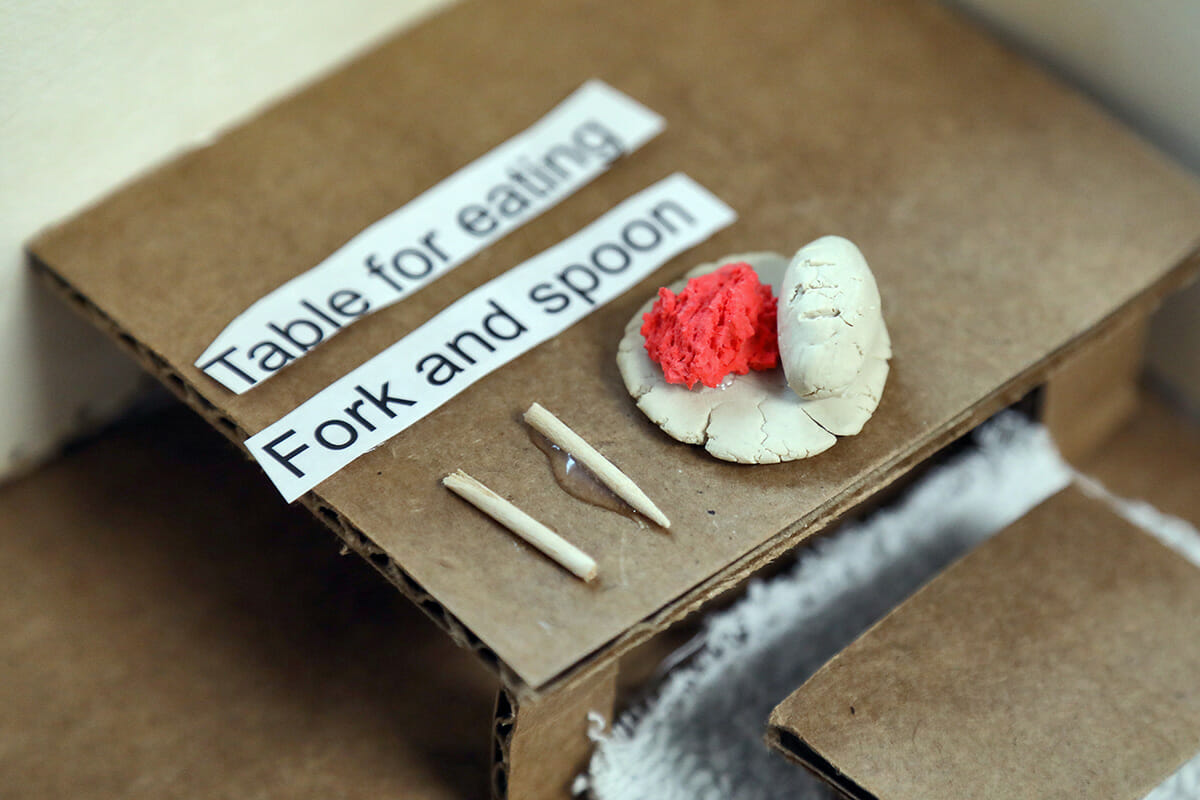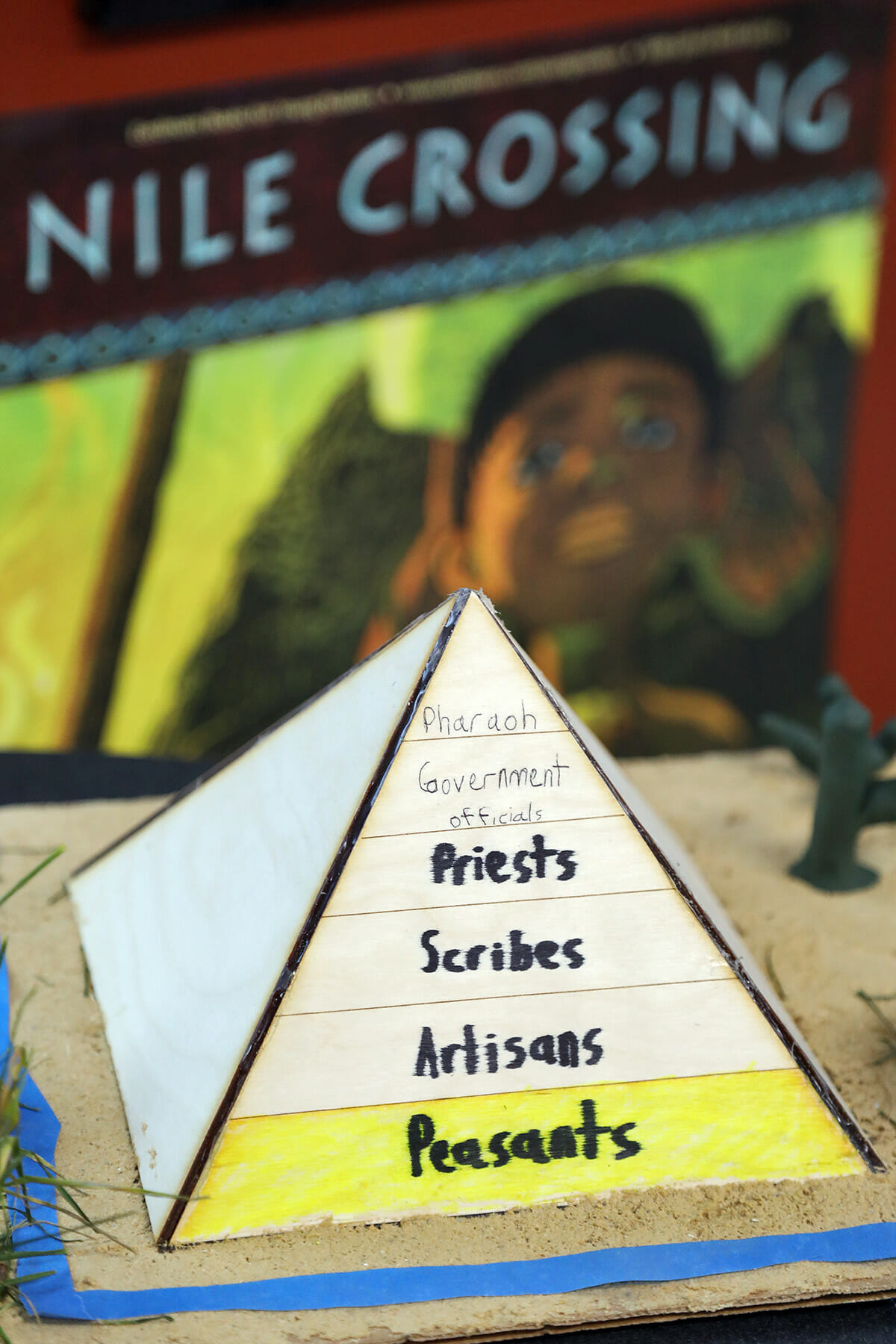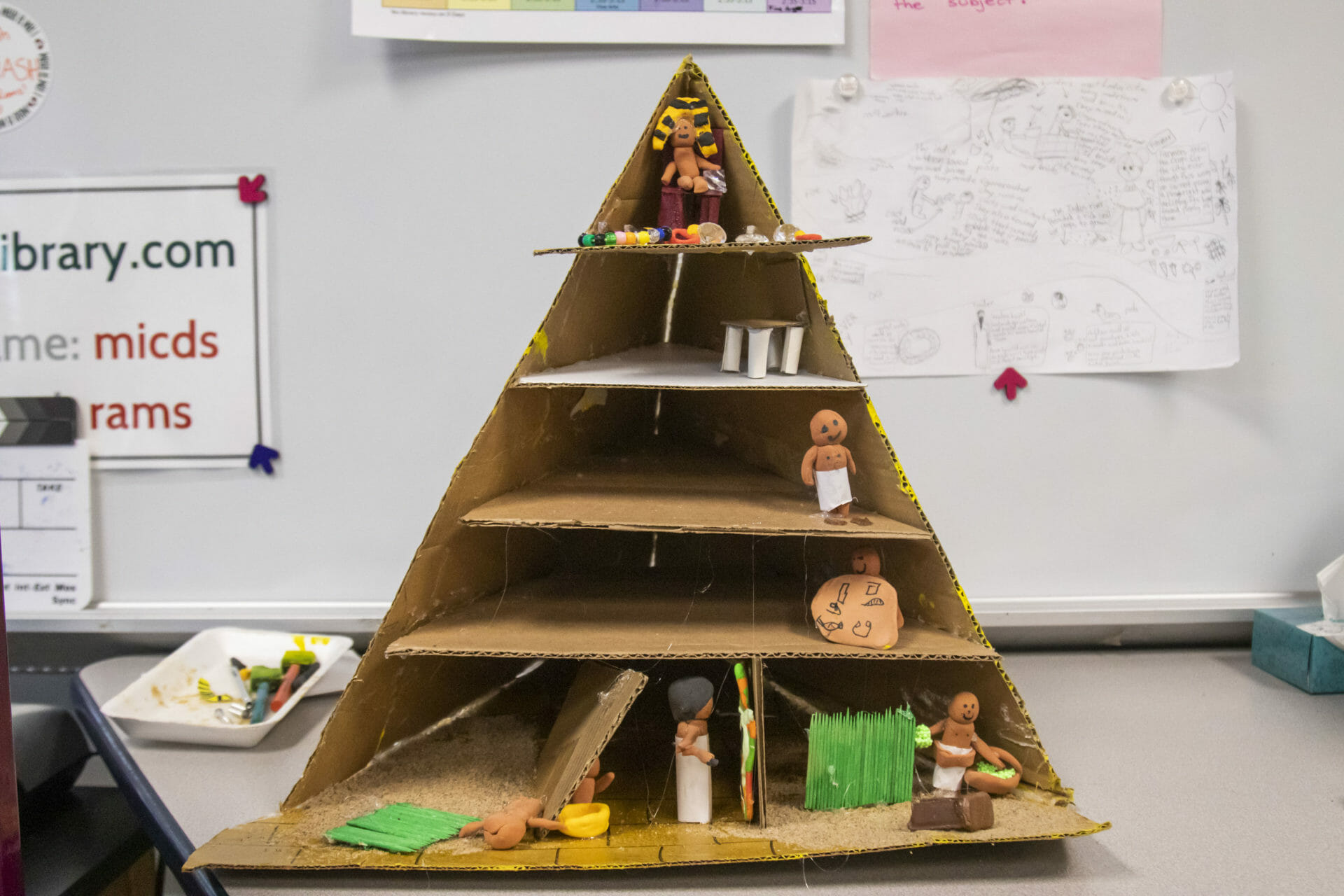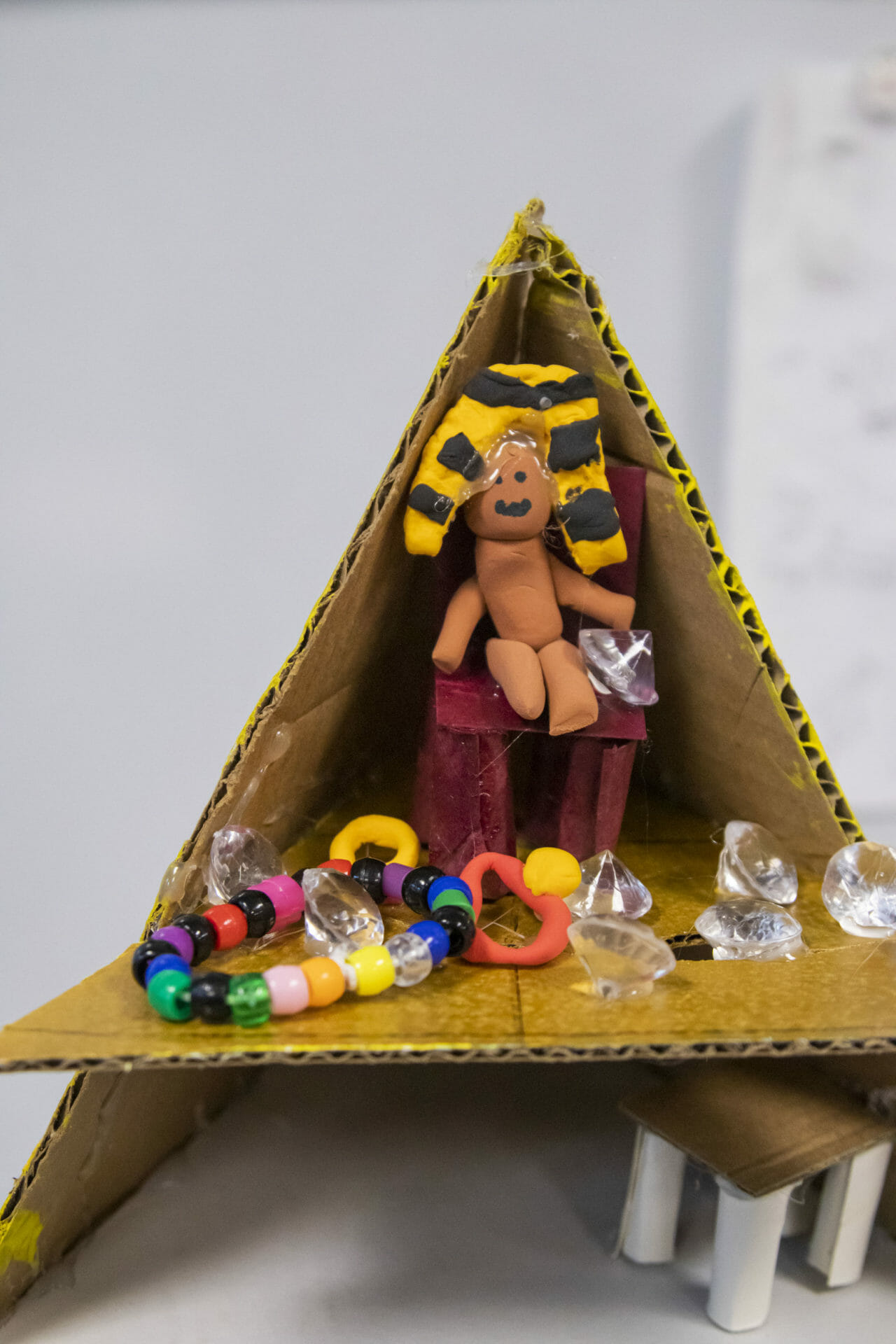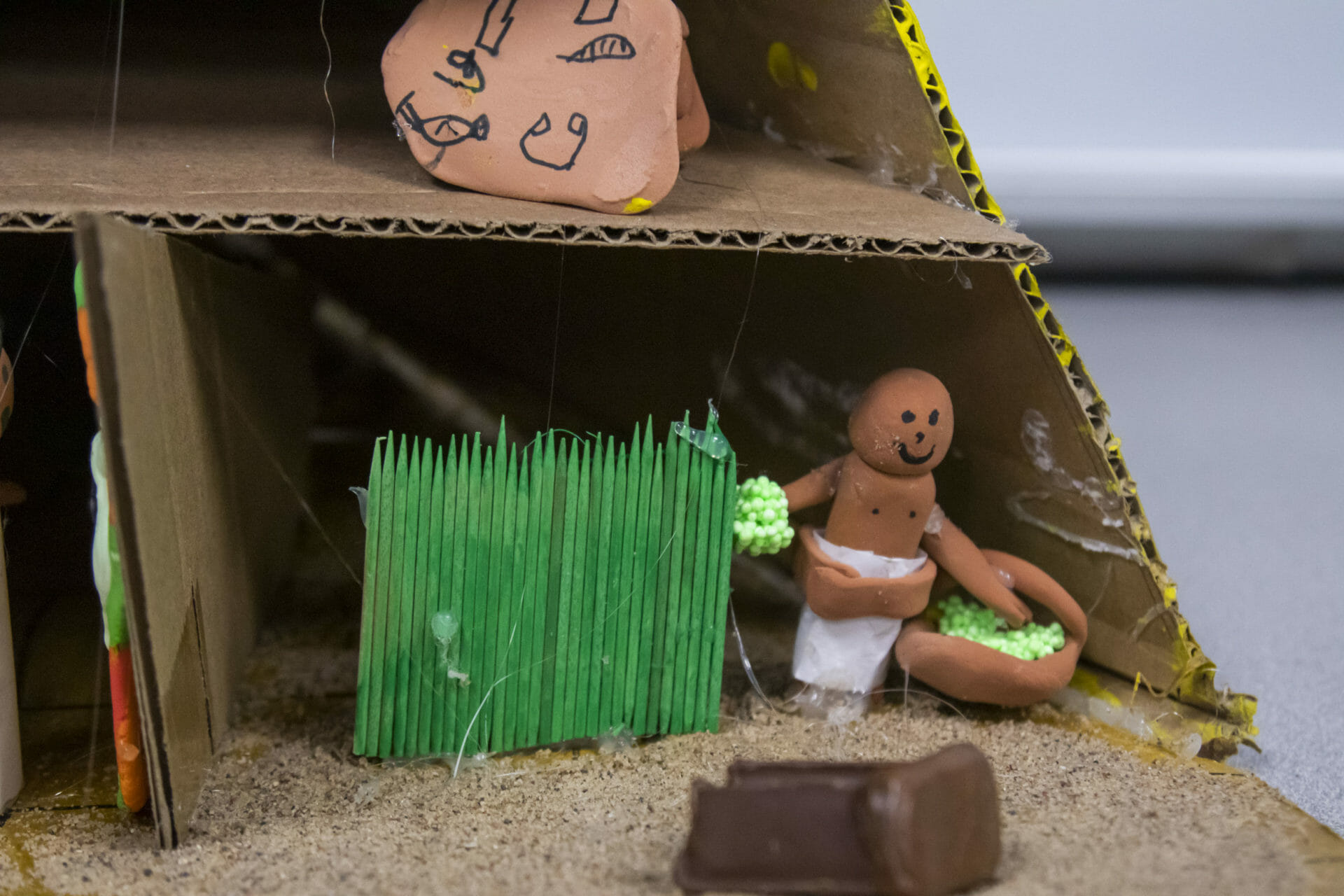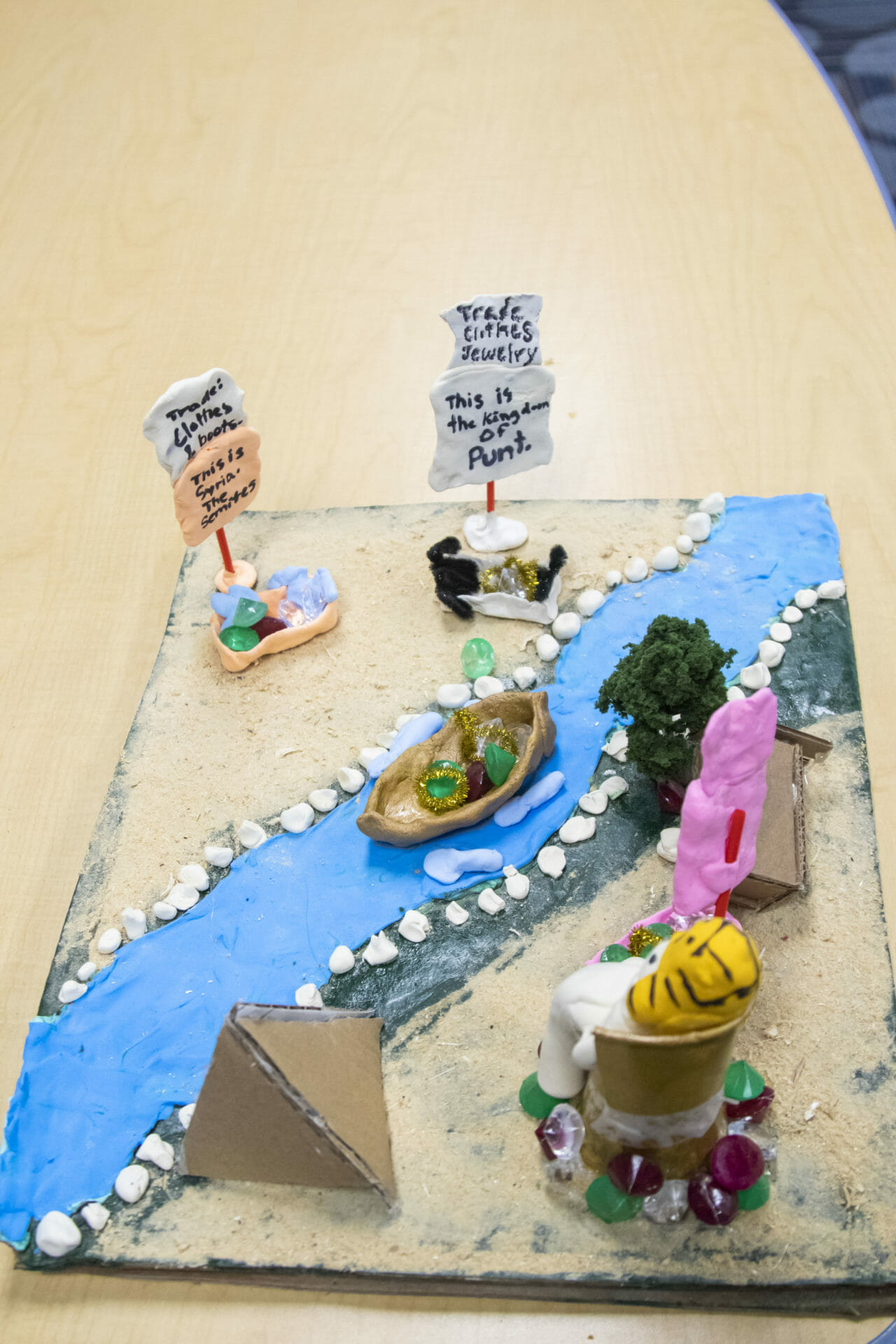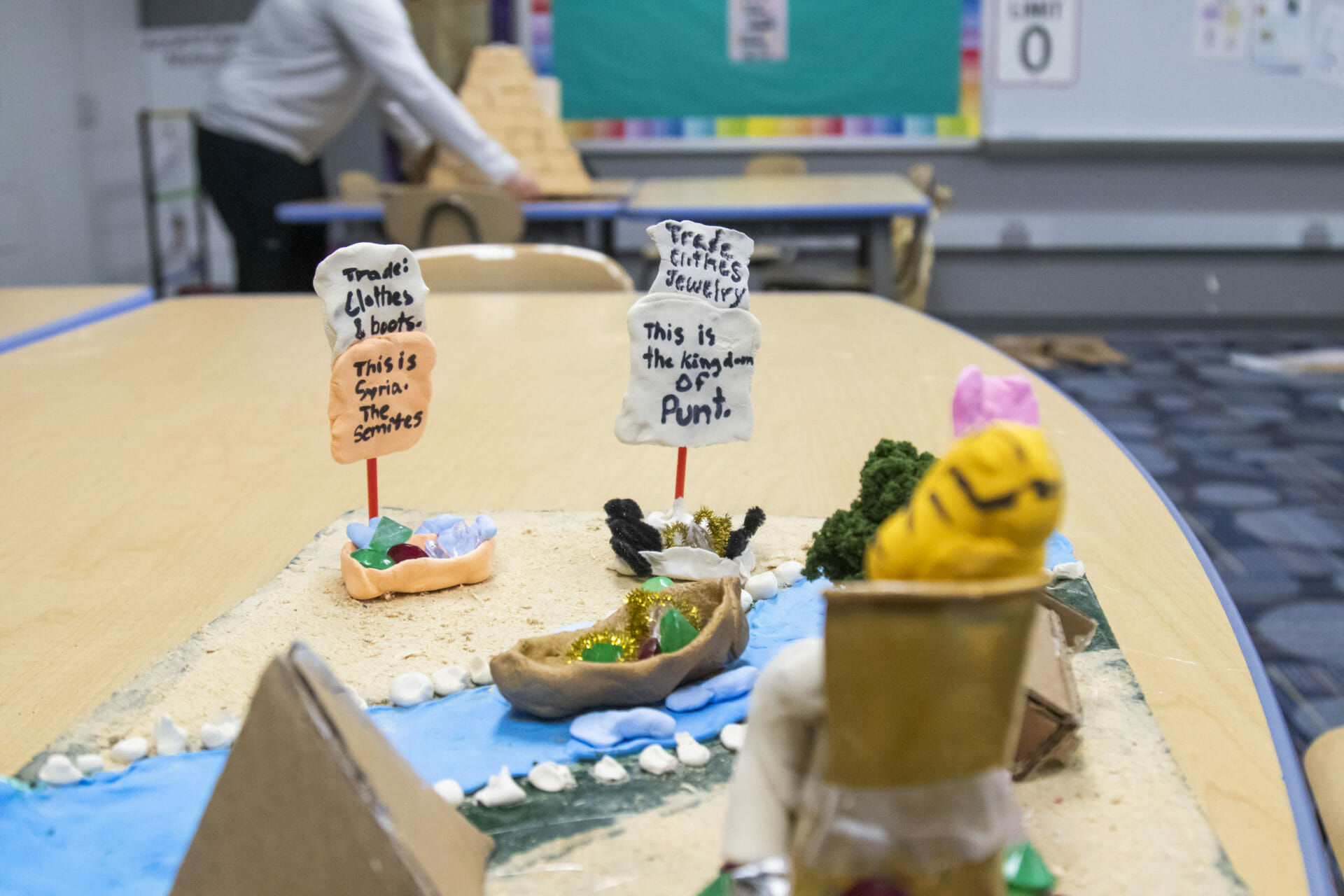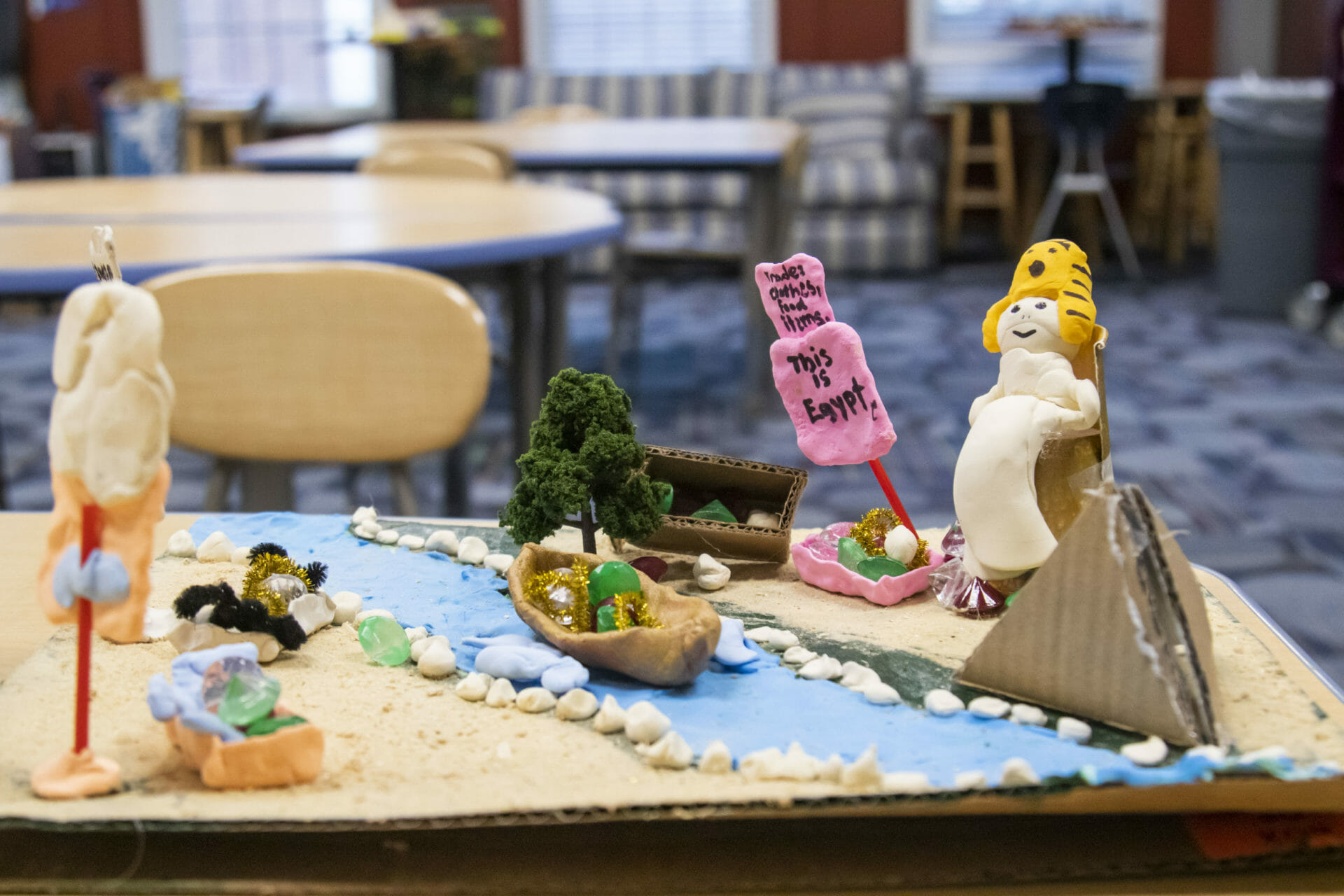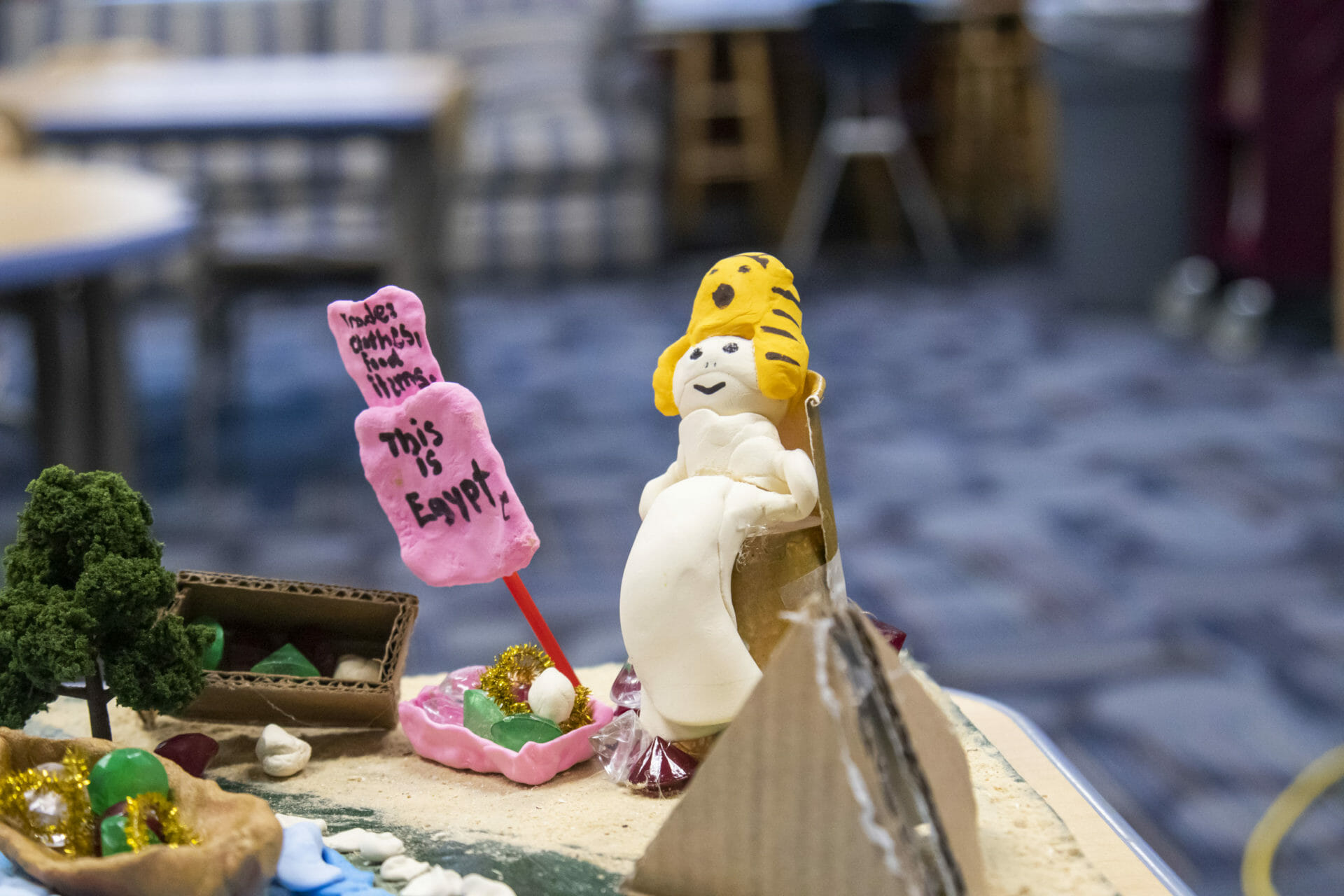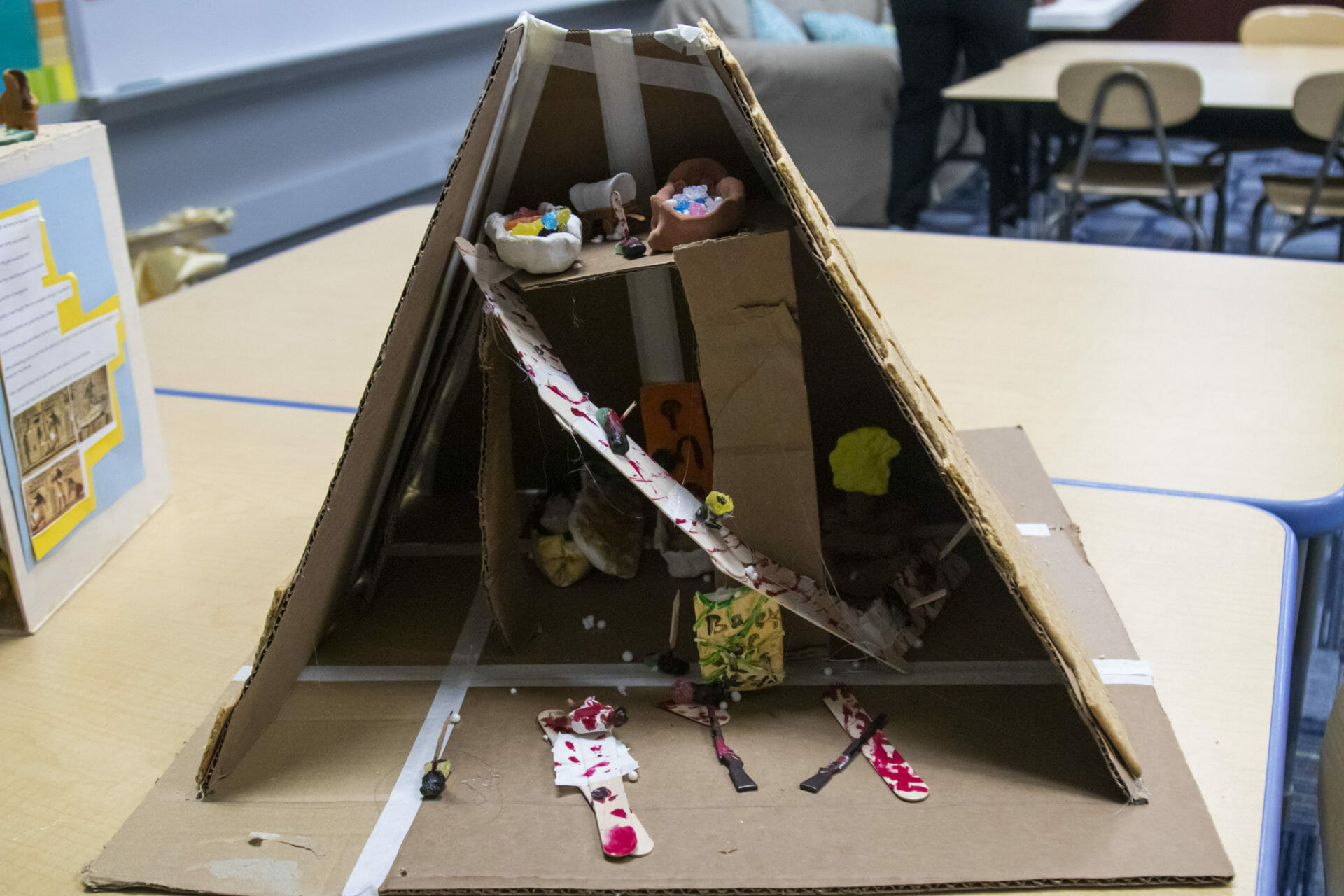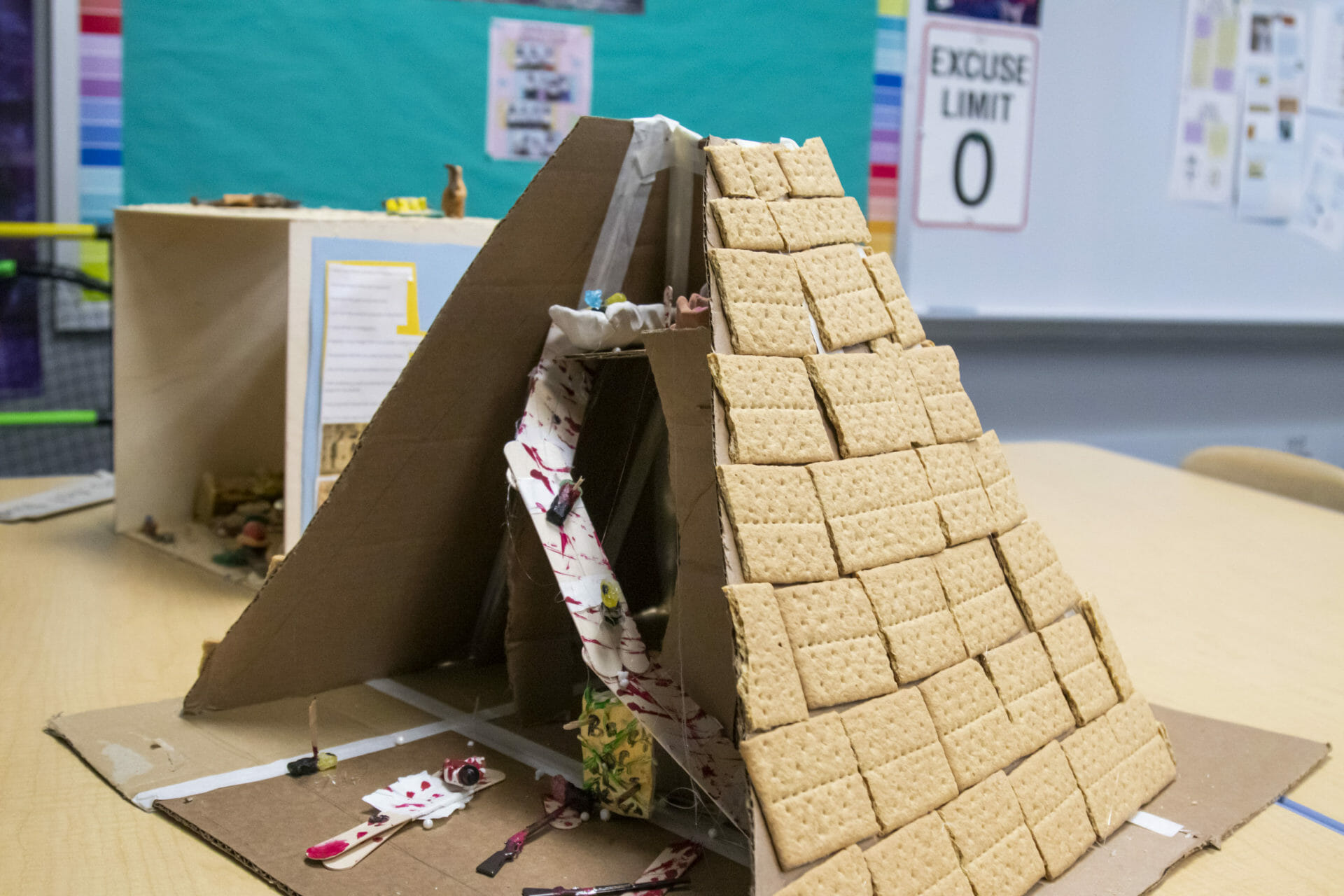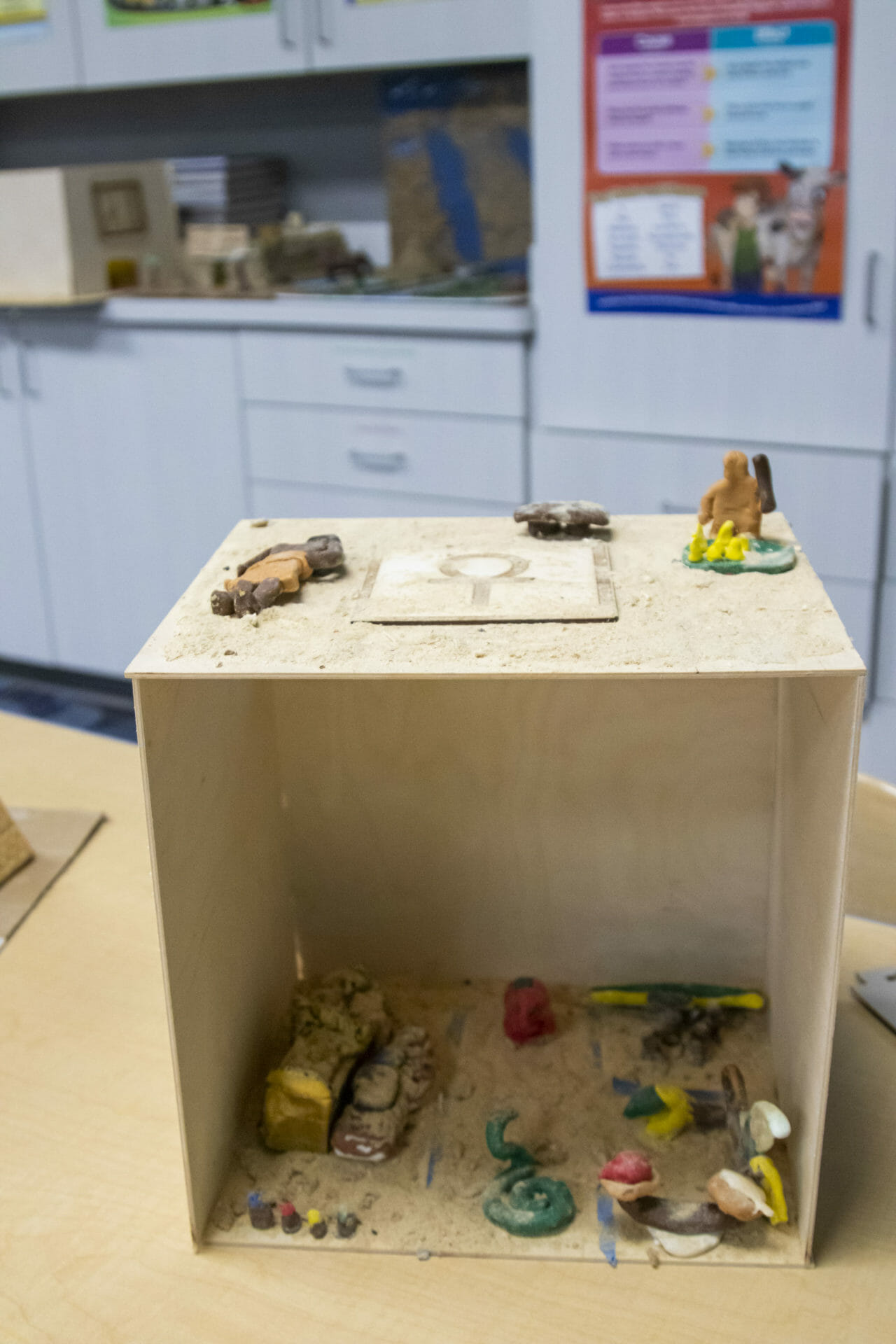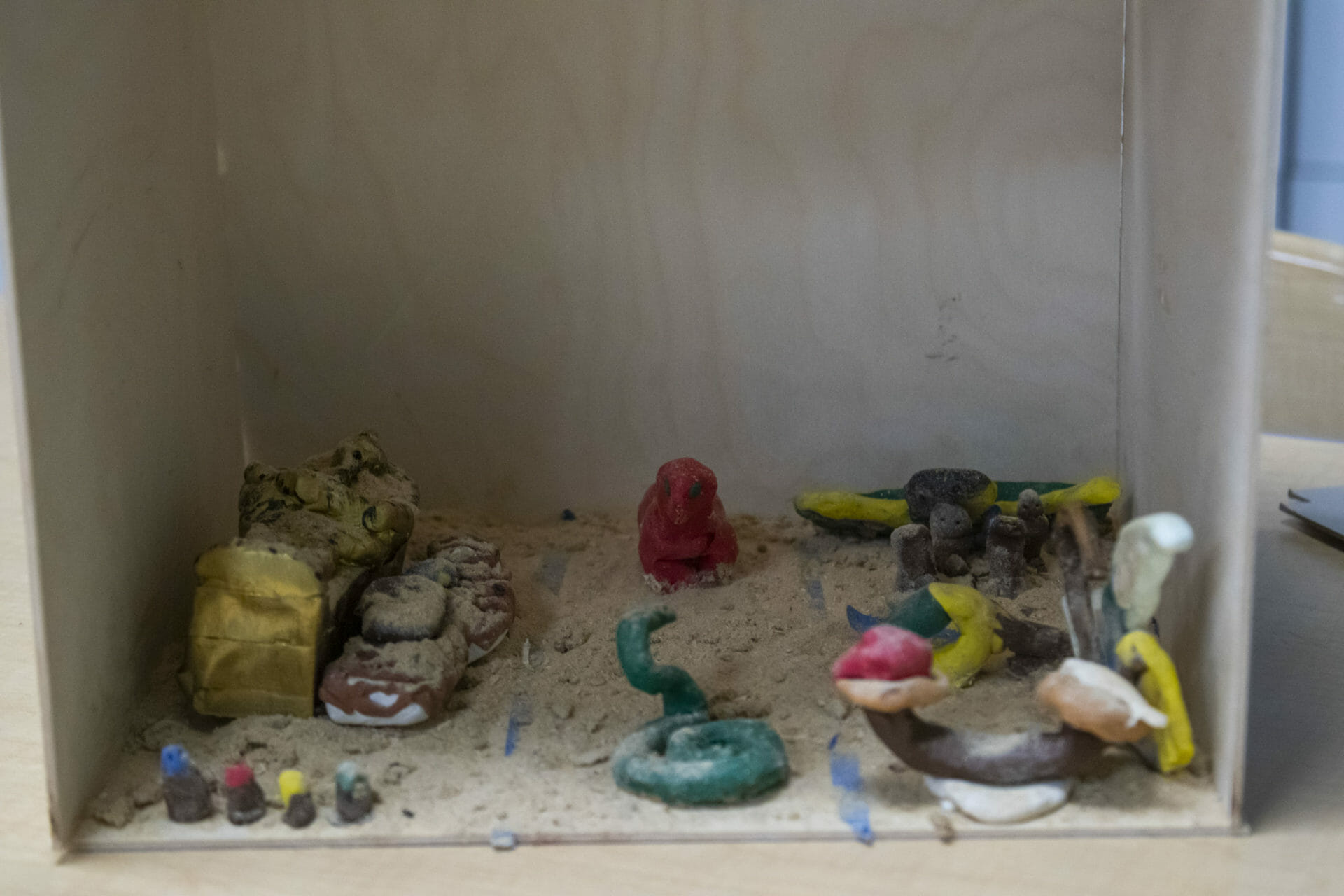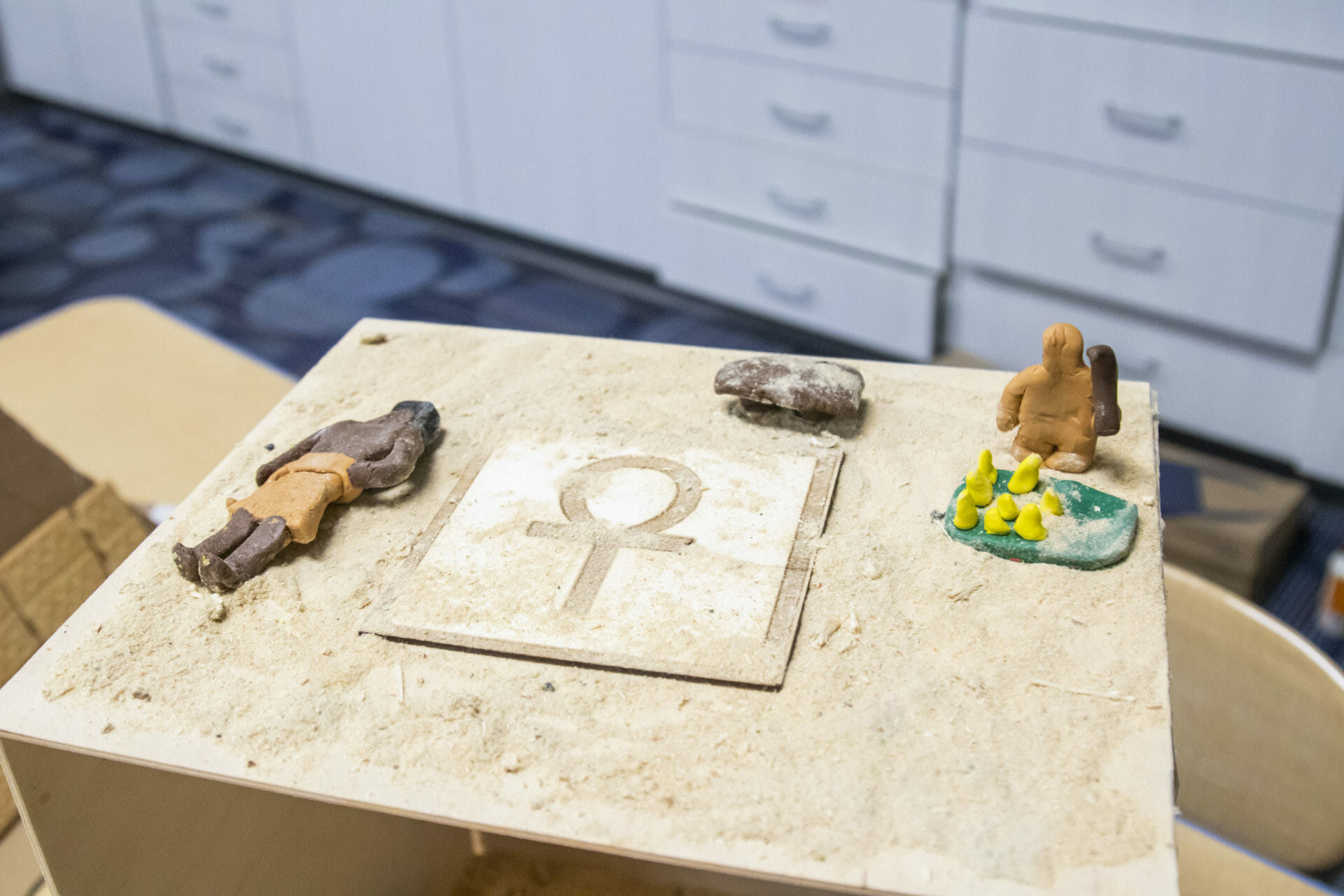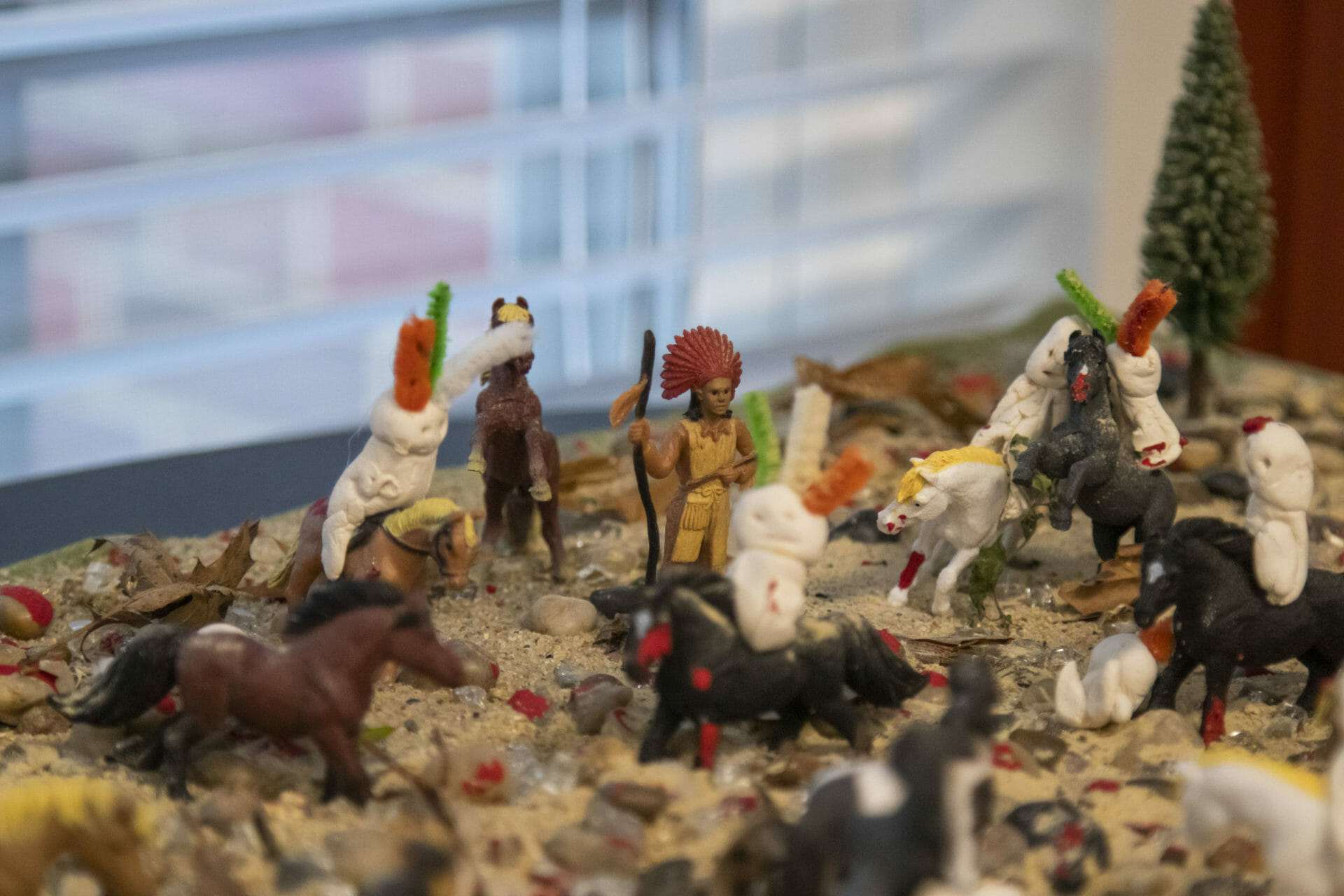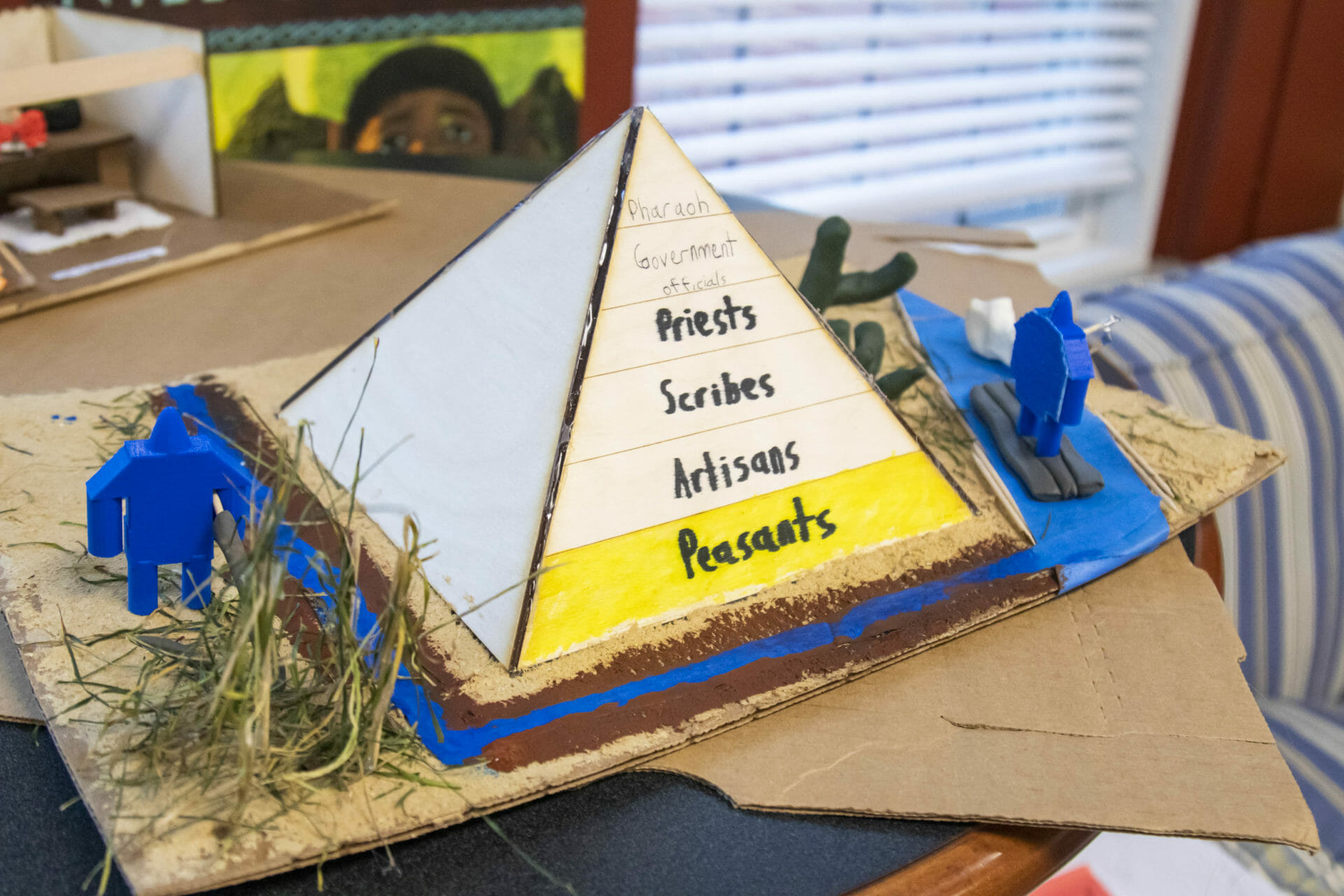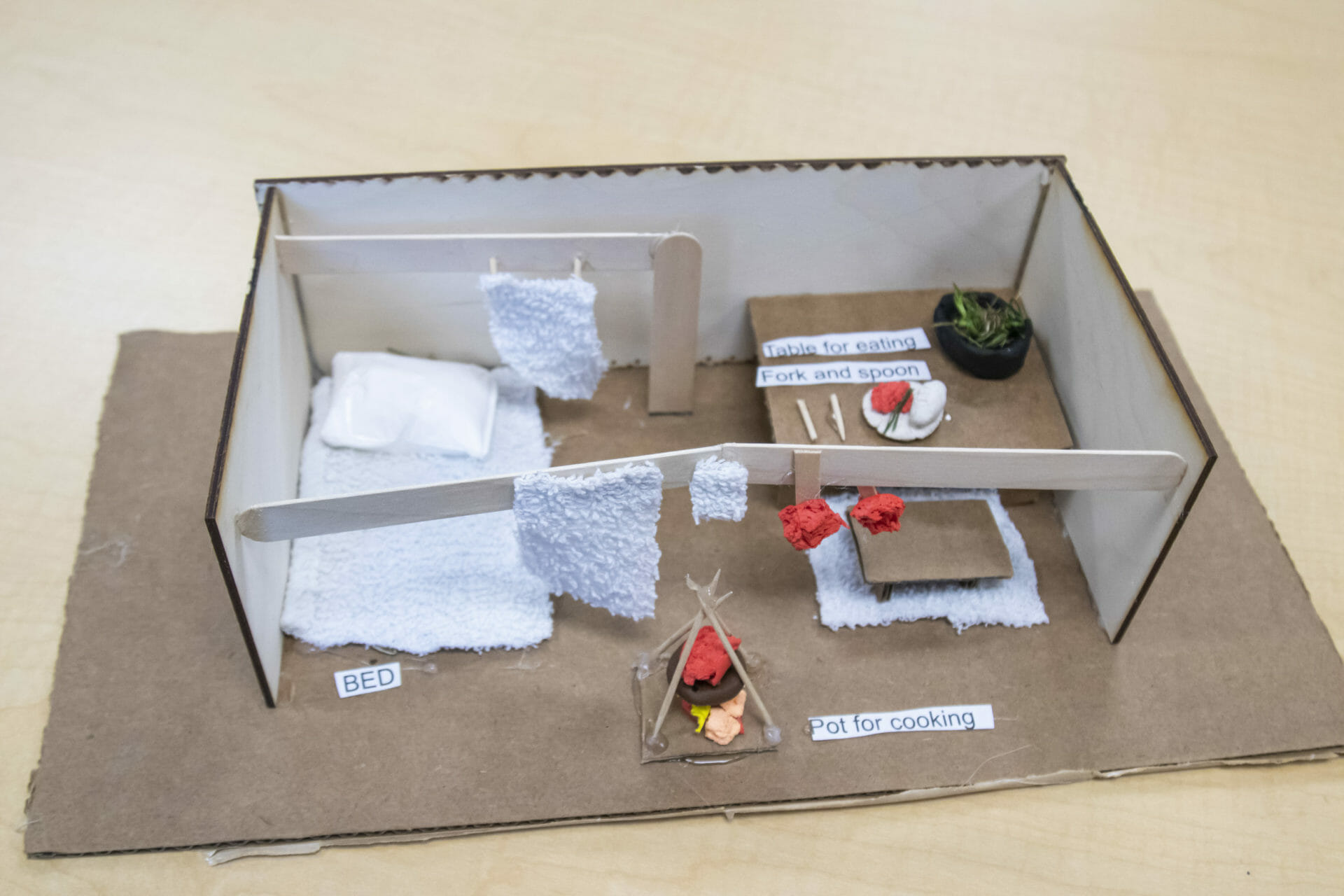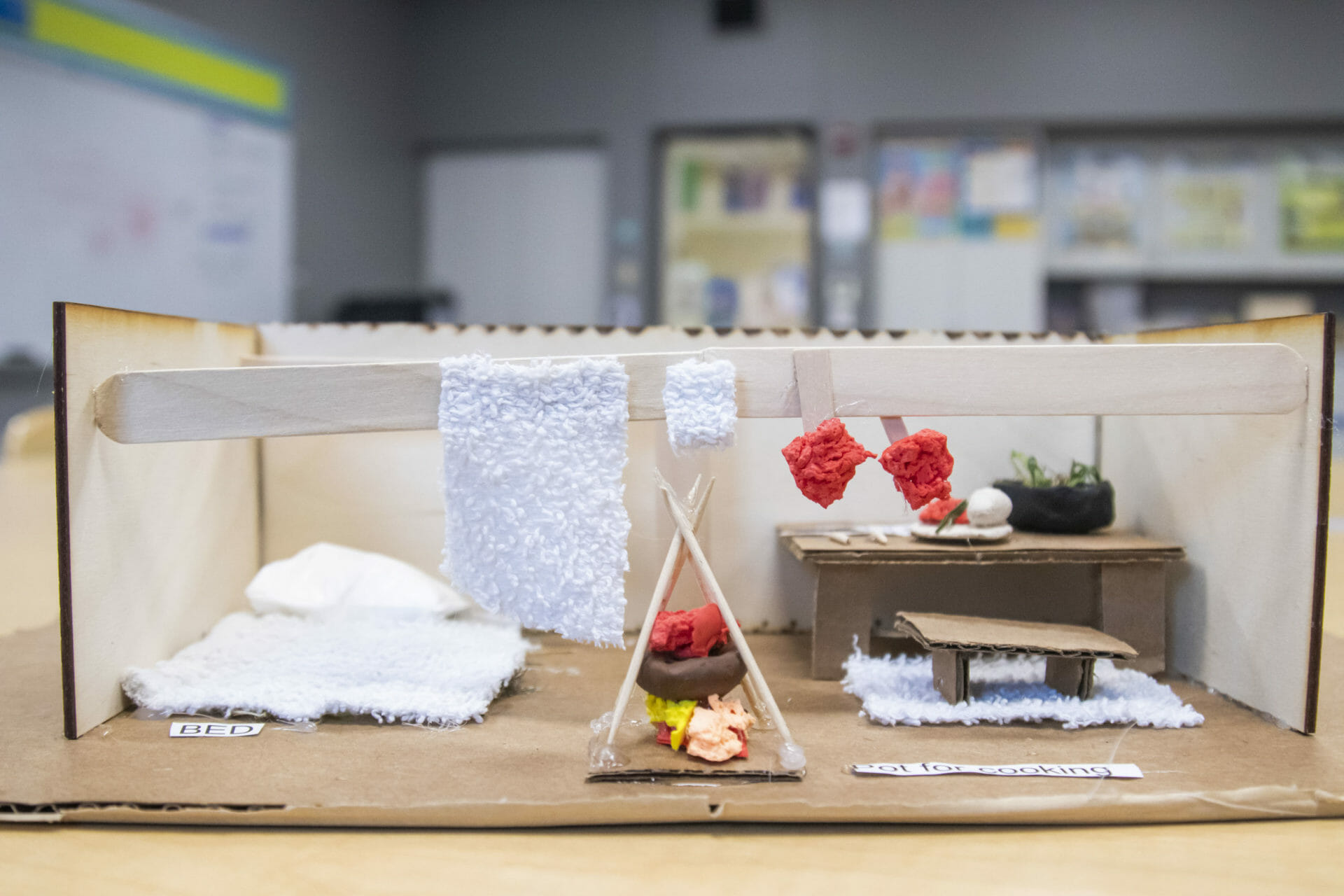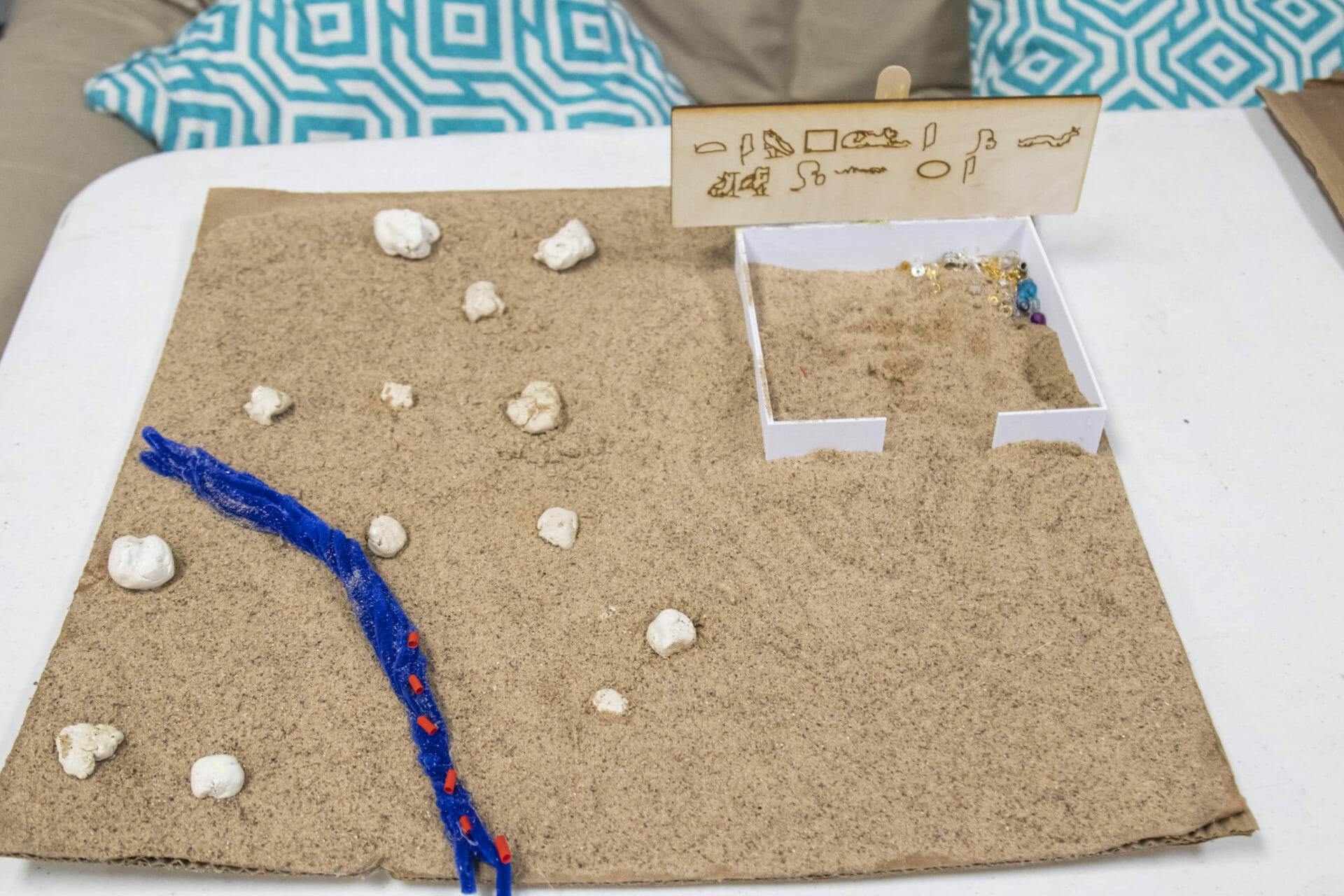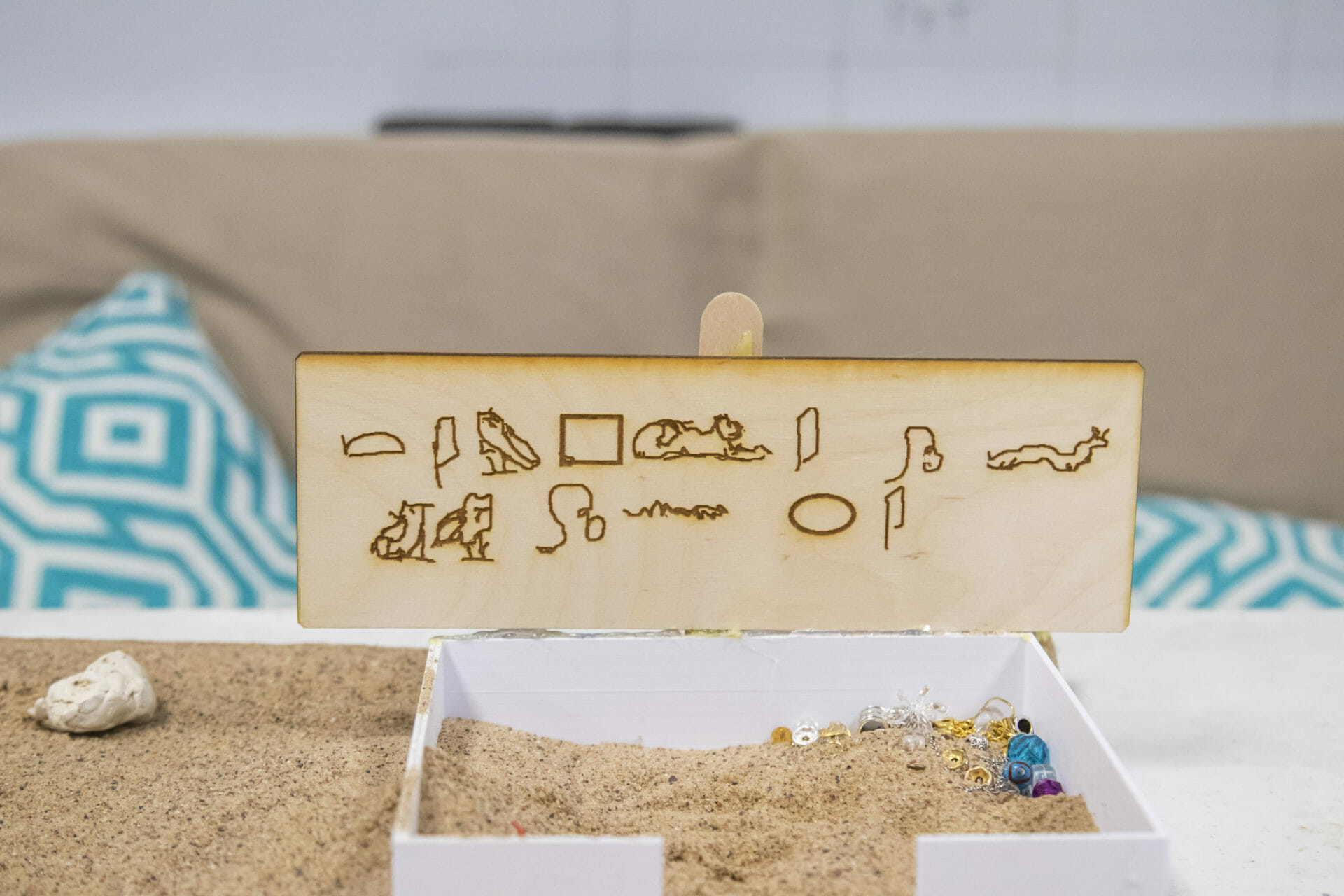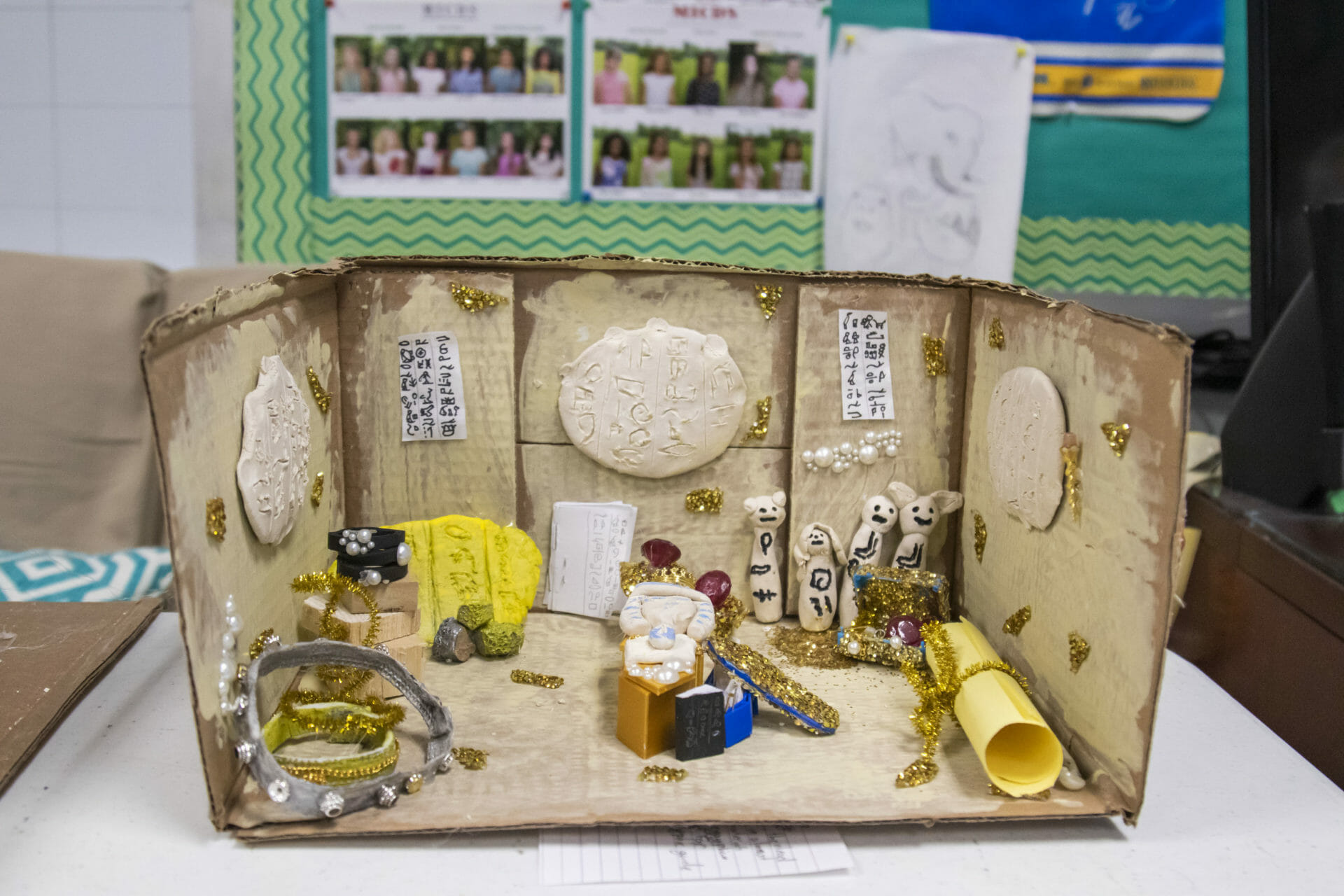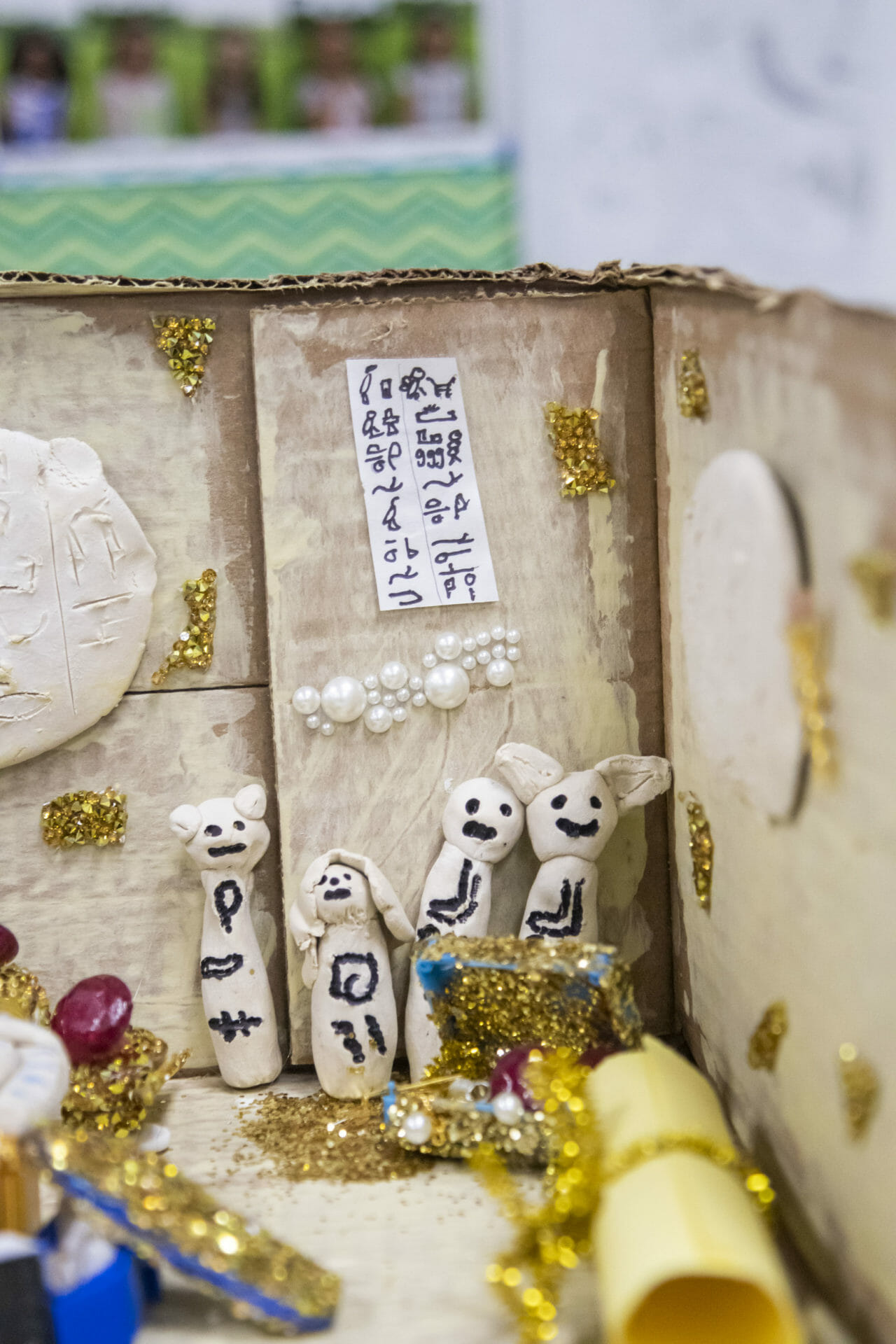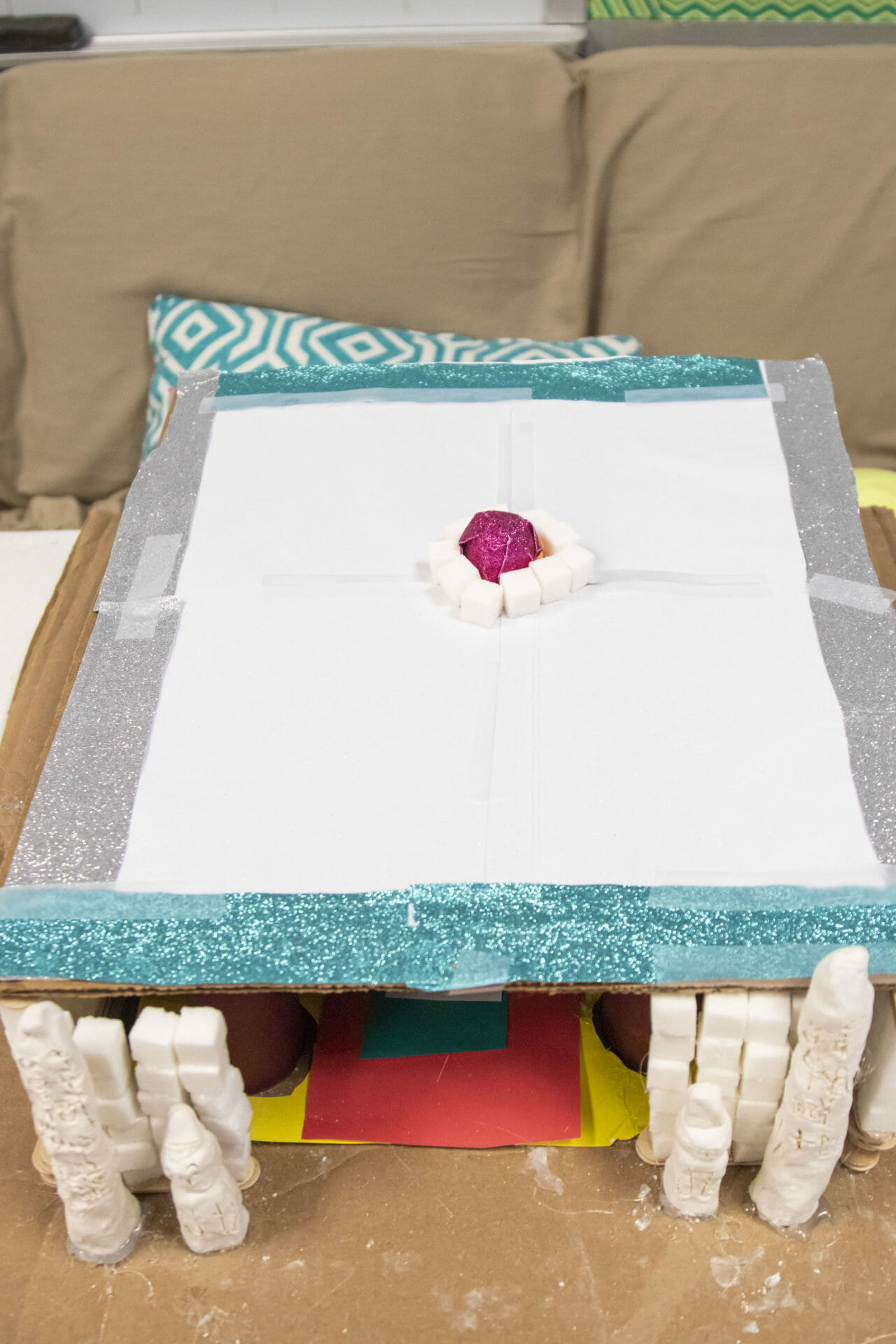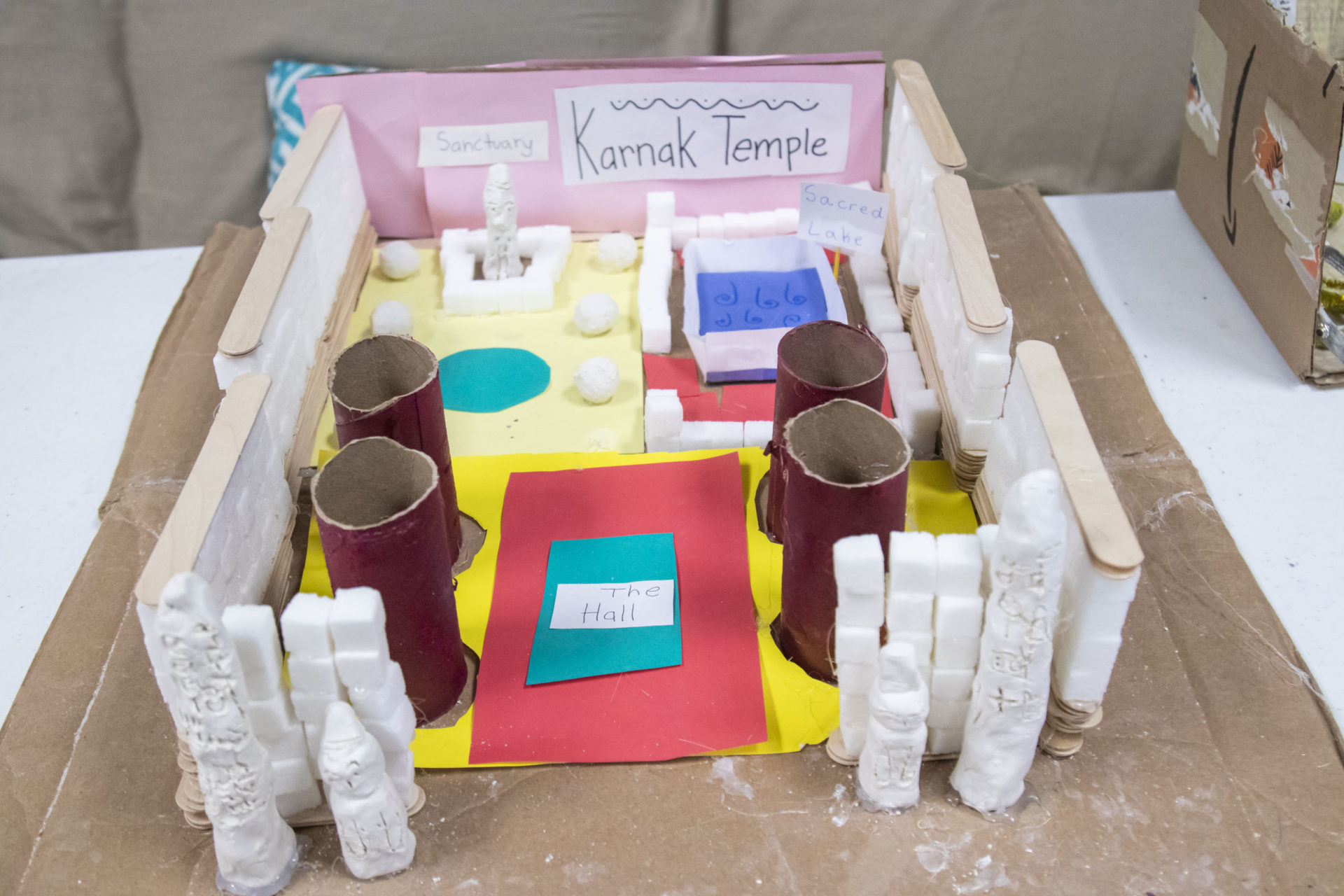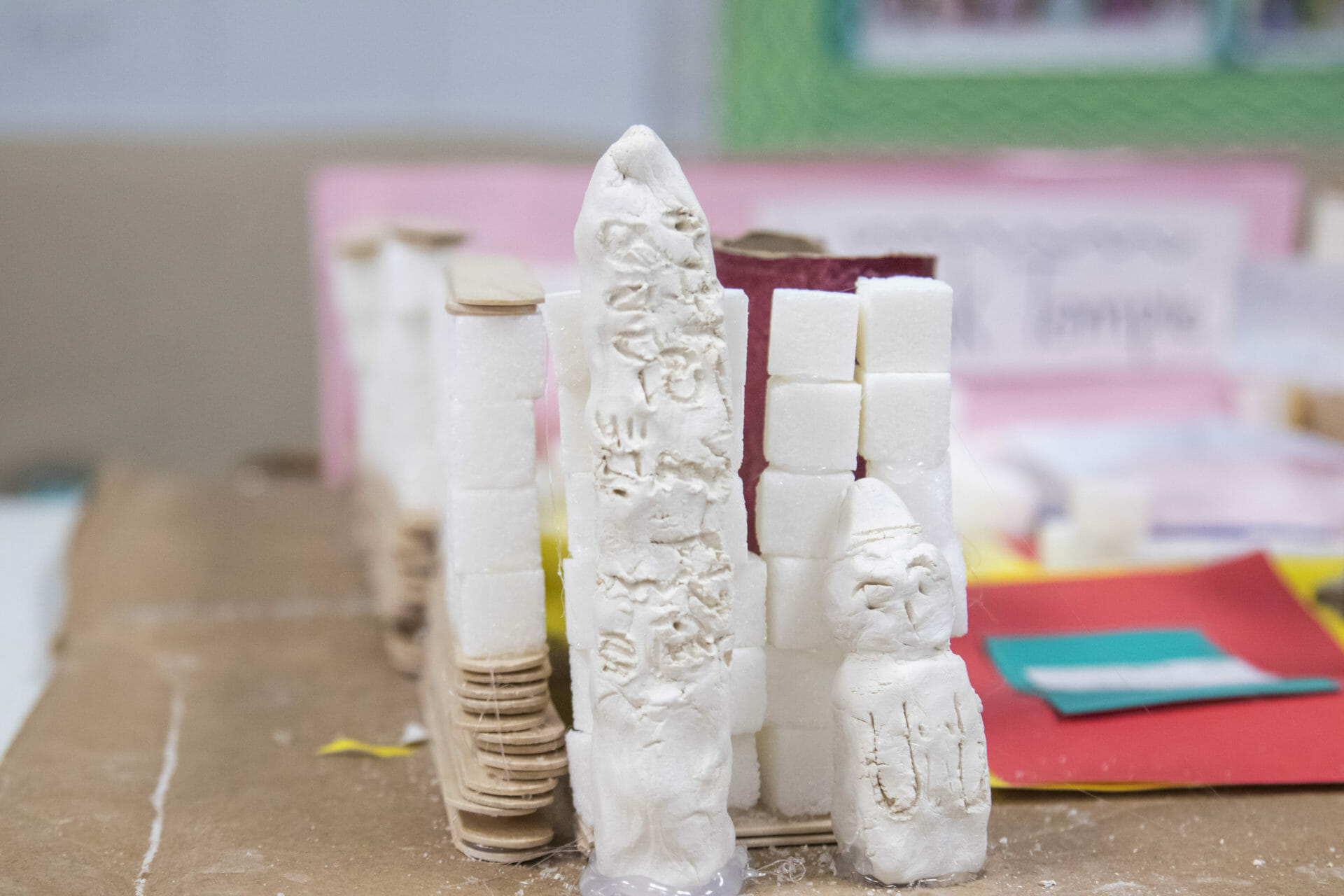Fifth-grade history and social sciences students finished their Egyptian studies with a hands-on project that brought the ancient country to life. Their task was to create a scene or snapshot in time using Minecraft or various materials in the Middle School maker space.
First, they divided into teams and chose a topic to research, such as daily life, temples, farming and irrigation, pyramids, trading on the Nile, the Battle of Kadesh, or the mummification process. Each team member conducted research, finding two to three articles to support their topic and taking notes on each.
In „daily life,“ for instance, students could choose to focus on one specific social class (there were six and each lived very different lives) or compare all the social classes. Temples were designed and built by the ancient Egyptians to commemorate their pharaohs and worship their gods. Some of the most famous temples included Abu Simbel, Karnak, Luxor, and the Temple of Hatshepsut, and students could research on one or two of these temples before designing and building a scene that shows the inside of an ancient Egyptian temple including as many different rooms, statues, and artwork as possible.
Each group then collaborated to create a 3D scene that showcased their research. Every team member was expected to contribute, and each scene needed to accurately show Egypt’s distinctive desert landscape, including the Nile River if applicable. Then, they decided how to showcase their information, whether it was using the 3D printer and laser cutter in the maker space, or building a scene in Minecraft. They were allowed to use any type of material they want to build their project, and Middle School Science Teacher Branson Lawrence helped out the maker space groups. Some ideas for materials to use included 3D printed items, laser-cut and engraved wood, Legos, cardboard, styrofoam, paper, sugar cubes, and candy. Fifth Grade History and Social Sciences Teacher Robyn Williams instructed her students to get creative and use whatever resources they wanted.
„We worked on a model of all the social classes in Ancient Egypt,“ said Amya Singla ’29. „Not only did we learn about Ancient Egypt but we also learned how to collaborate with our team. I thought it was very fun because we got to be as creative as we wanted.“
Timo Finnegan ’29 said, „I was surprised by all the options of materials we could use and how much fun it was. I researched the peasants‘ social class and made a 3D model of them farming, and I made the social pyramid.“
„Something that I really enjoyed about this project was that you had to find a way to make a cool scene with your group,“ said Katherine Speckhals ’29. „I learned how to make cool projects and never doubt what I am making. Something that was hard when we were making our project was that we didn’t have all the materials that we wanted, so we made our own.“
Using their 3D model, the teams then presented their findings to their peers, with each teammate taking a role in the presentation. Nika Landrum ’29 said, „I think this project was really fun because we got to learn about our topics, work together. and be creative.“
„This is one of the students‘ favorite history projects in fifth grade,“ said Williams. „It gives them a choice and allows them to show their learning in a hands-on and creative way. We weren’t able to do hands-on building last year, so it was nice to see students so engaged and working together this year to create their final projects. It was a great way to wrap up our ancient Egypt unit.“
